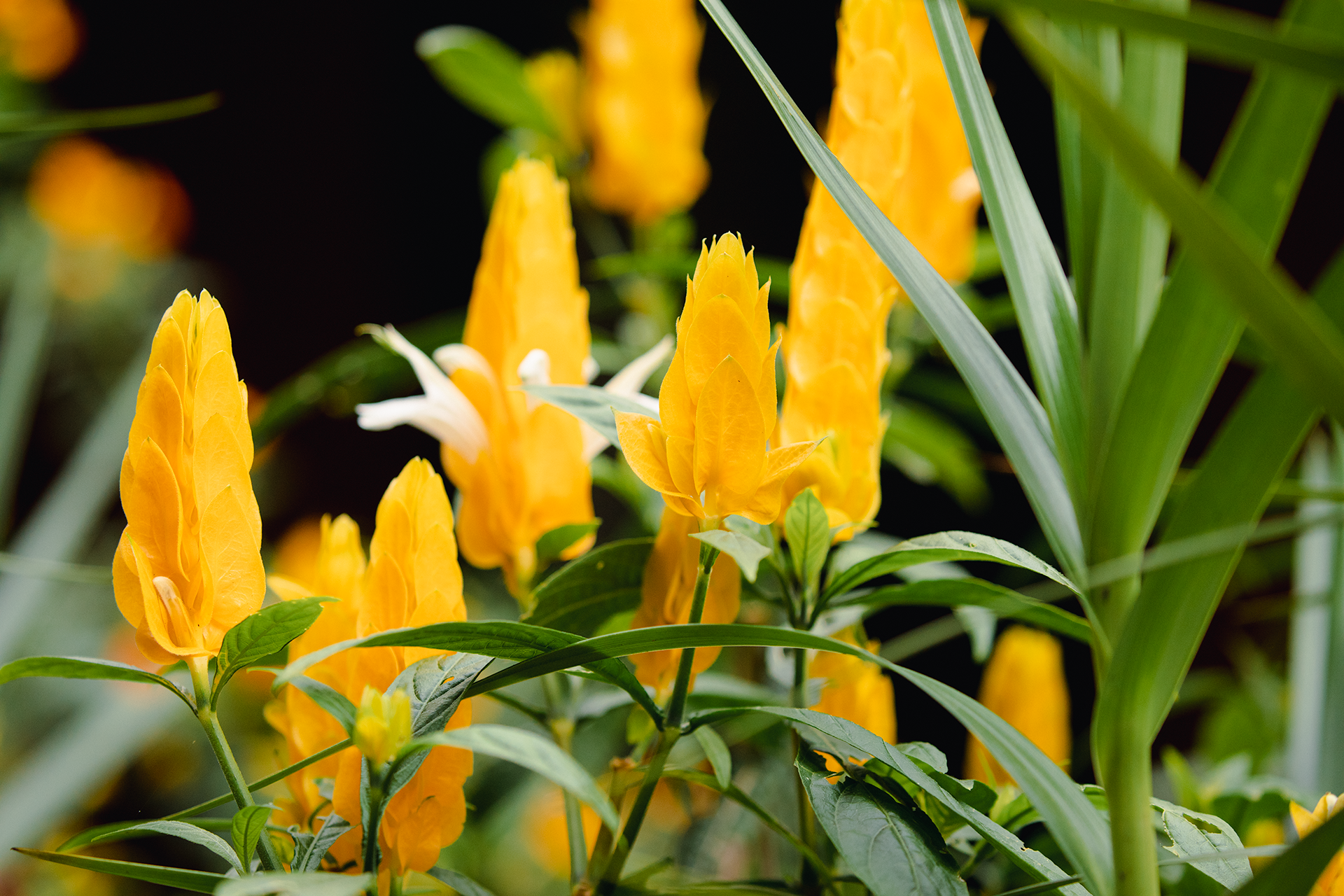
The El Dorado ProAves Reserve is a hidden gem in the Santa Marta region for a variety of reasons, needed a converted 4WD being one of them. I was convinced that the converted Land Cruisers were from an erstwhile infamous period of Colombian history, but they do the job of navigating some near impossible inclines of the bone shaking mountain roads. We were met by our brilliant guide, Sebastian who used to be professor at the University in Bogota before taking up birding full time. With his immense passion and knowledge of the regions and the highly endemic birds, we could not have asked for more. The three days we were in the resort literally flew by between soaking in breathtaking sunsets, verdant vistas from the lodge and trying to keep up with how many birds we saw.
Click on the images to learn more about these fascinating birds of Santa Marta. Click again to close and come
back to the gallery.
Bird names are linked to their respective profile page on e-Bird which is a fantastic resource from Cornell University for bird enthusiasts.
Click on the buttons below to filter.
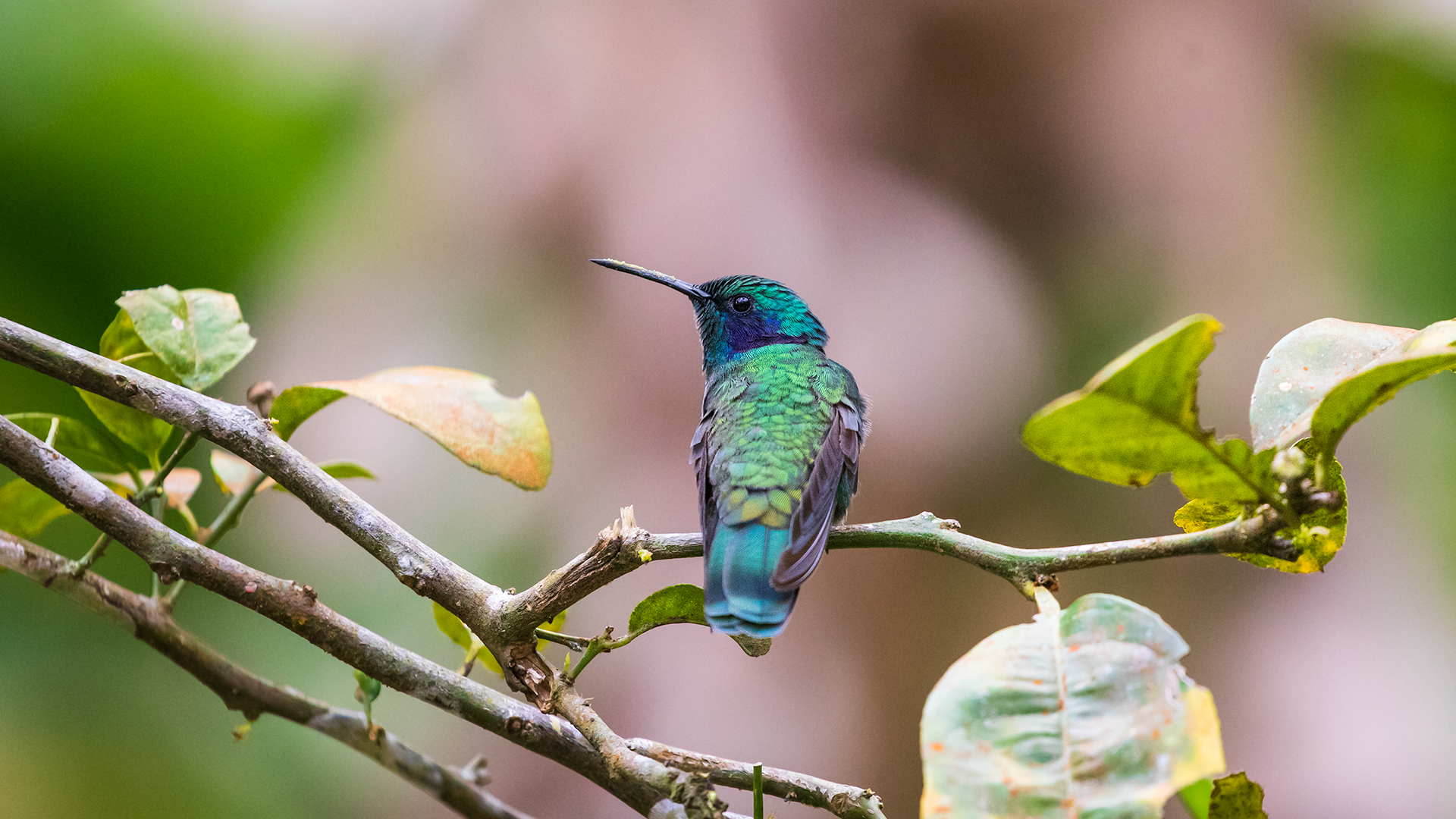
Medium-sized hummingbird, all sparkly green with obvious blue or purple cheek patch. Bill is slightly decurved. Sexes similar. Extremely similar to Mexican Violetear, but no range overlap. Sparkling Violetear of South America is larger and has violet belly. Found singly in forests, where it can be quite common. Also visits feeders and gardens. Listen for the constant chipping song.
COLOMBIA . Santa Marta . 2022
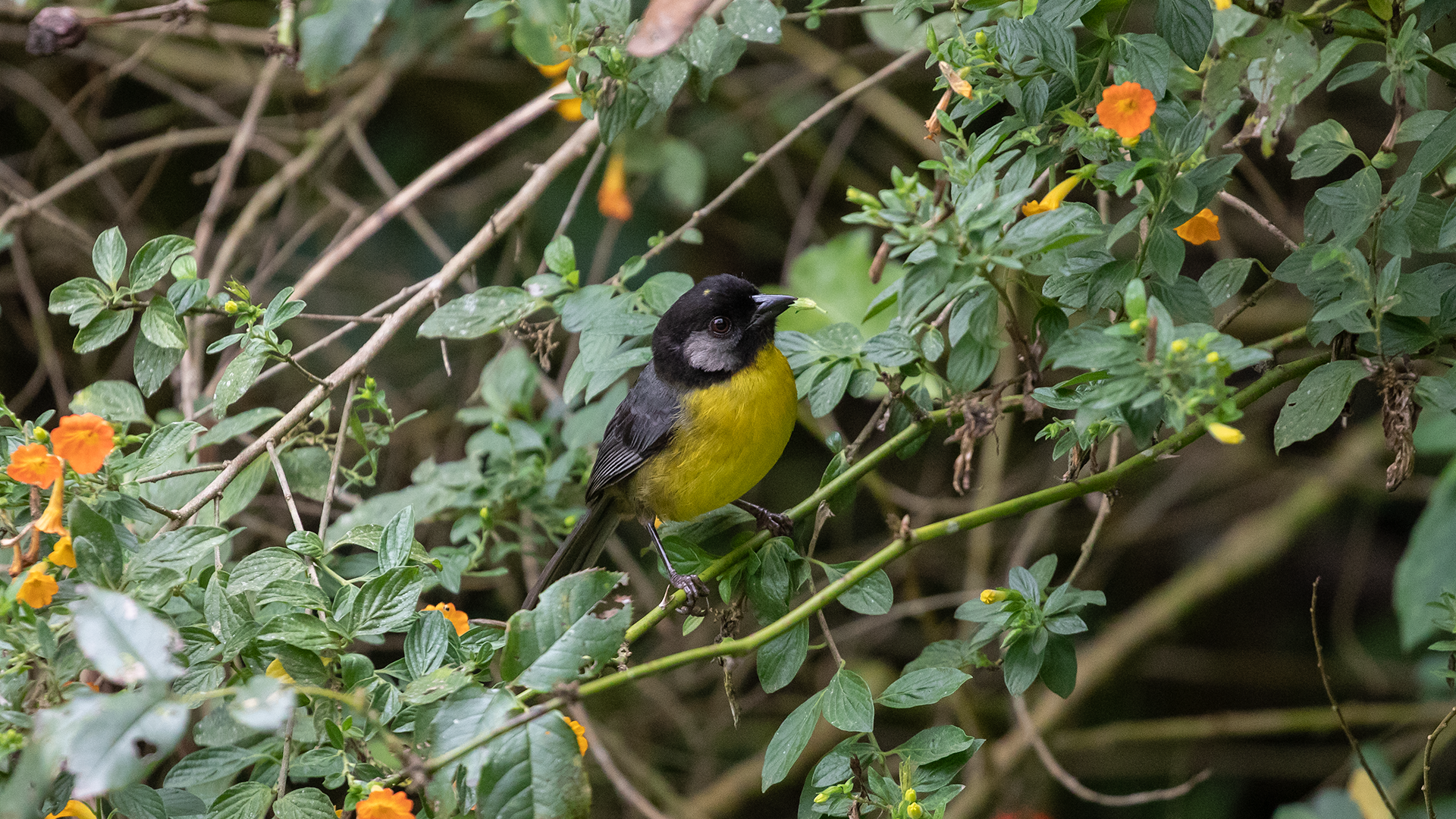
A very distinctive brushfinch endemic to the Santa Marta Mountains of Colombia. It has a simple yet very attractive plumage pattern with a black head, white ear, yellow underparts, and gray back. Nothing similar occurs together with it. Common, bold, and easy to see, inhabiting cloud forest as well as clearings with just scattered trees. It’s often the first endemic encountered by birders visiting this isolated mountain range.
COLOMBIA . Santa Marta . 2022
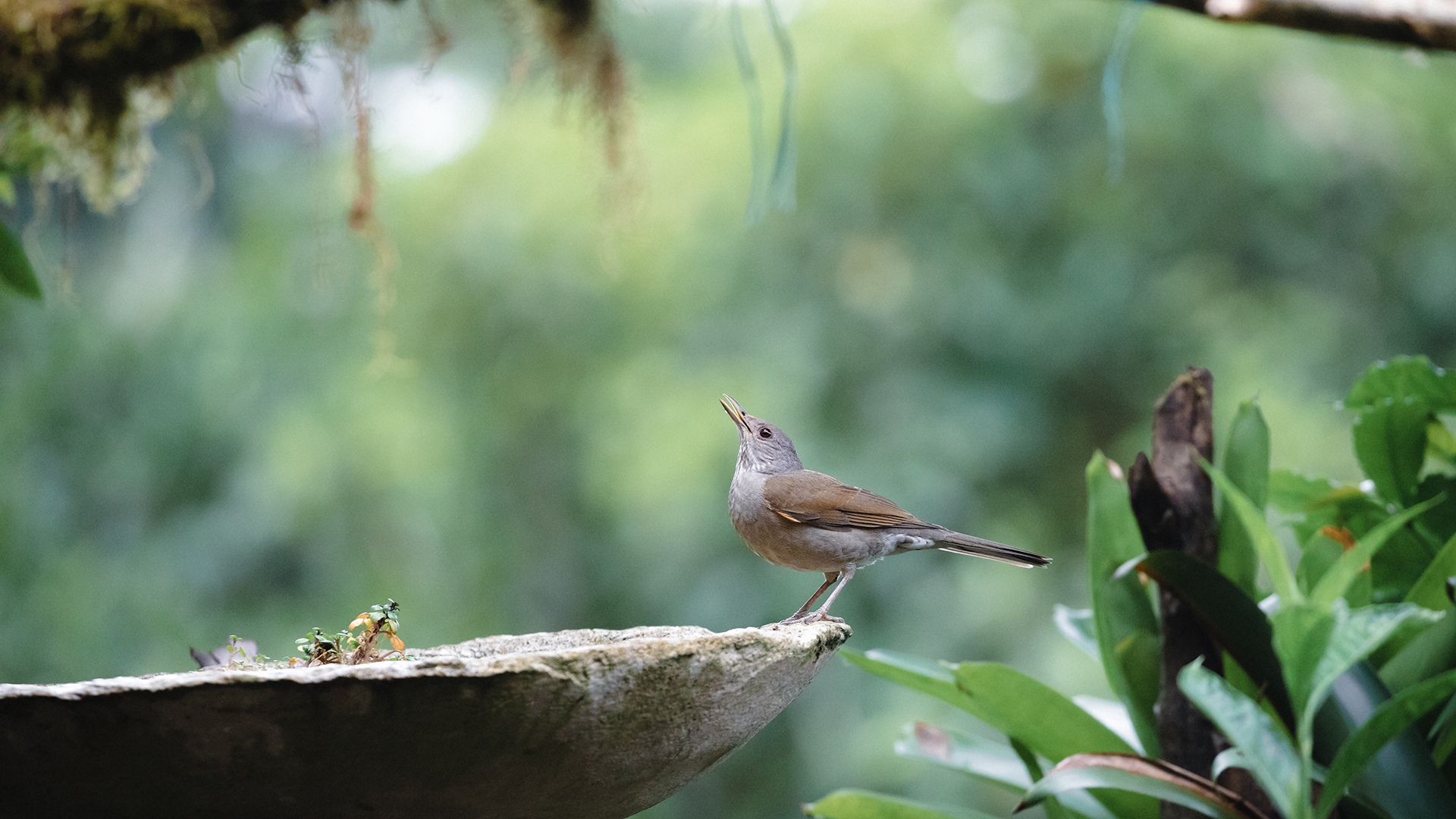
A common and widespread thrush found in open woodland and forest edge across much of lowland South America. Nondescript: brownish overall with grayer crown, streaked throat, and dingy yellowish bill. Compare with Creamy-bellied Thrush, which is darker overall with dark lores and more contrasting throat streaking. Usually rather conspicuous; singles or pairs can often be seen hopping in the open or feeding in a fruiting tree.
COLOMBIA . Santa Marta . 2022
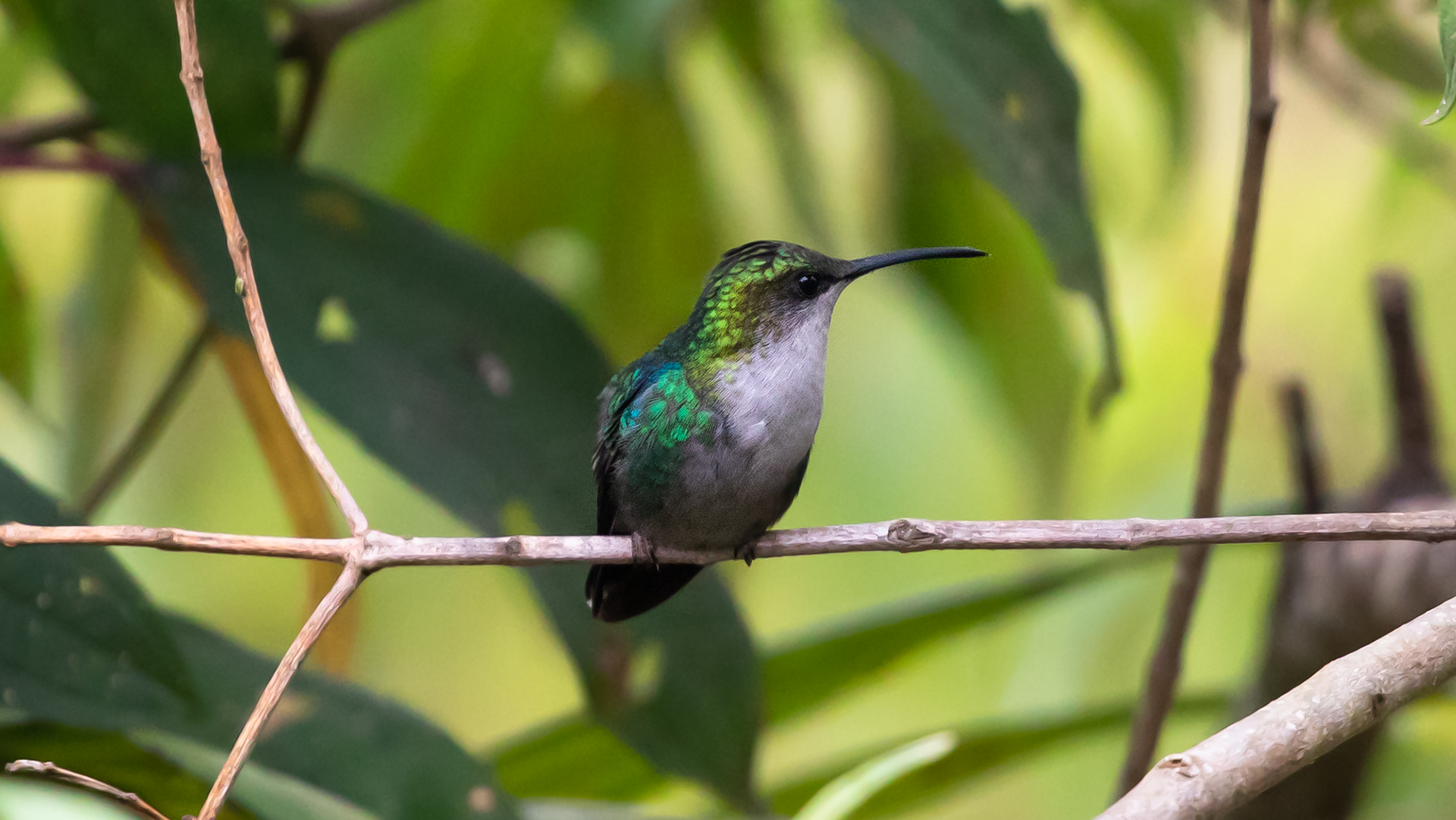
Favors evergreen forest and edge in tropical lowlands, often near streams. Feeds mainly at low to middle levels in shady understory, but comes to feeders at edges and in clearings. Male is stunning but often looks all dark: note the fairly long, deeply forked tail and brilliant emerald and violet plumage. Female rather dull and plain: note the black bill, green-mottled flanks, and blue-black tail with whitish corners.
COLOMBIA . Santa Marta . 2022
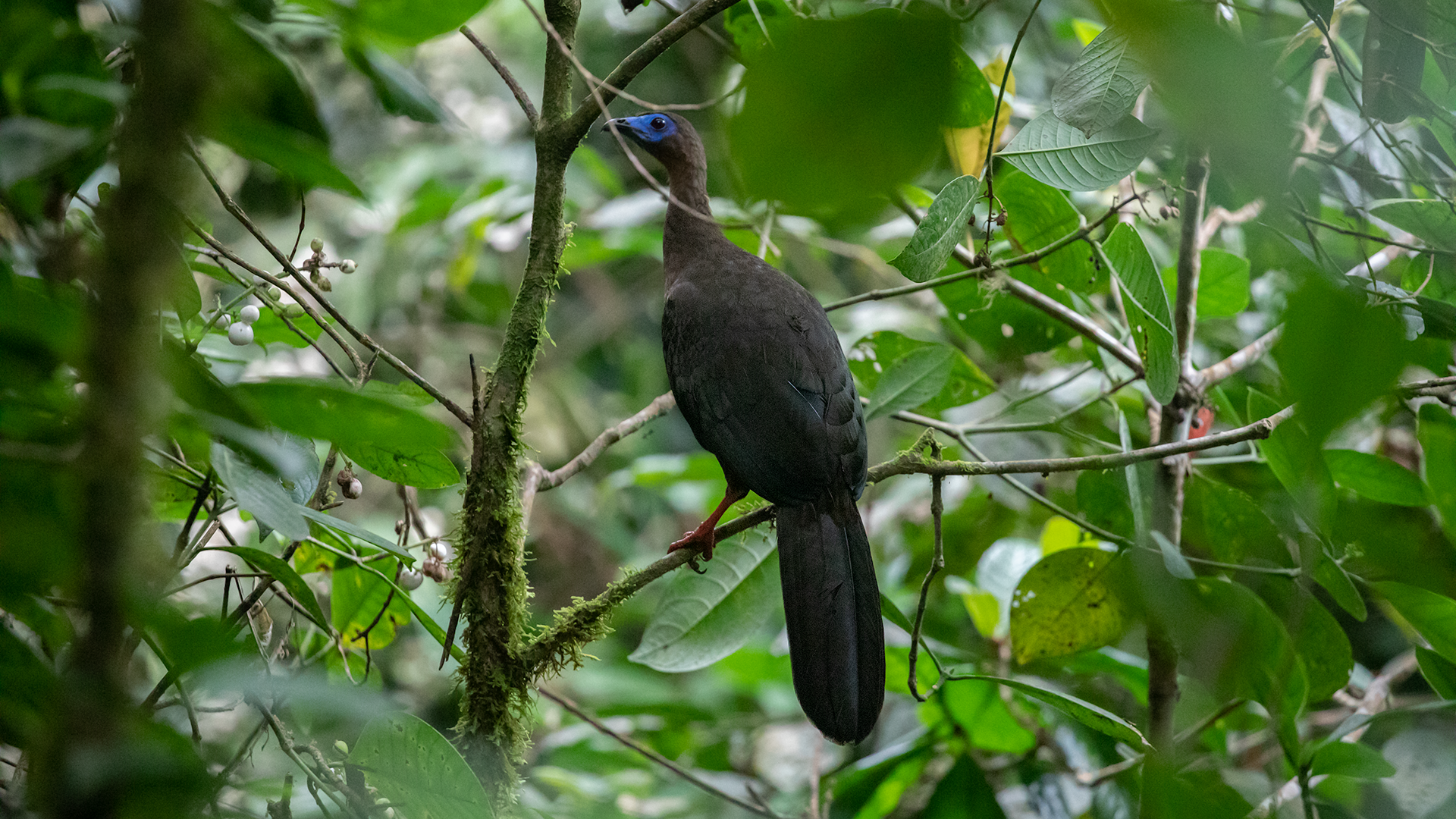
Large chickenlike bird, but small for a guan. Distinctive: mostly brown with contrasting rufous belly and bright blue facial skin around red eye. Found in subtropical zones on both slopes of Andes, from Colombia to Bolivia. Rather unobtrusive and quiet; can be difficult to spot as it perches in the middle and upper levels of the forest. Often in pairs or small groups.
COLOMBIA . Santa Marta . 2022
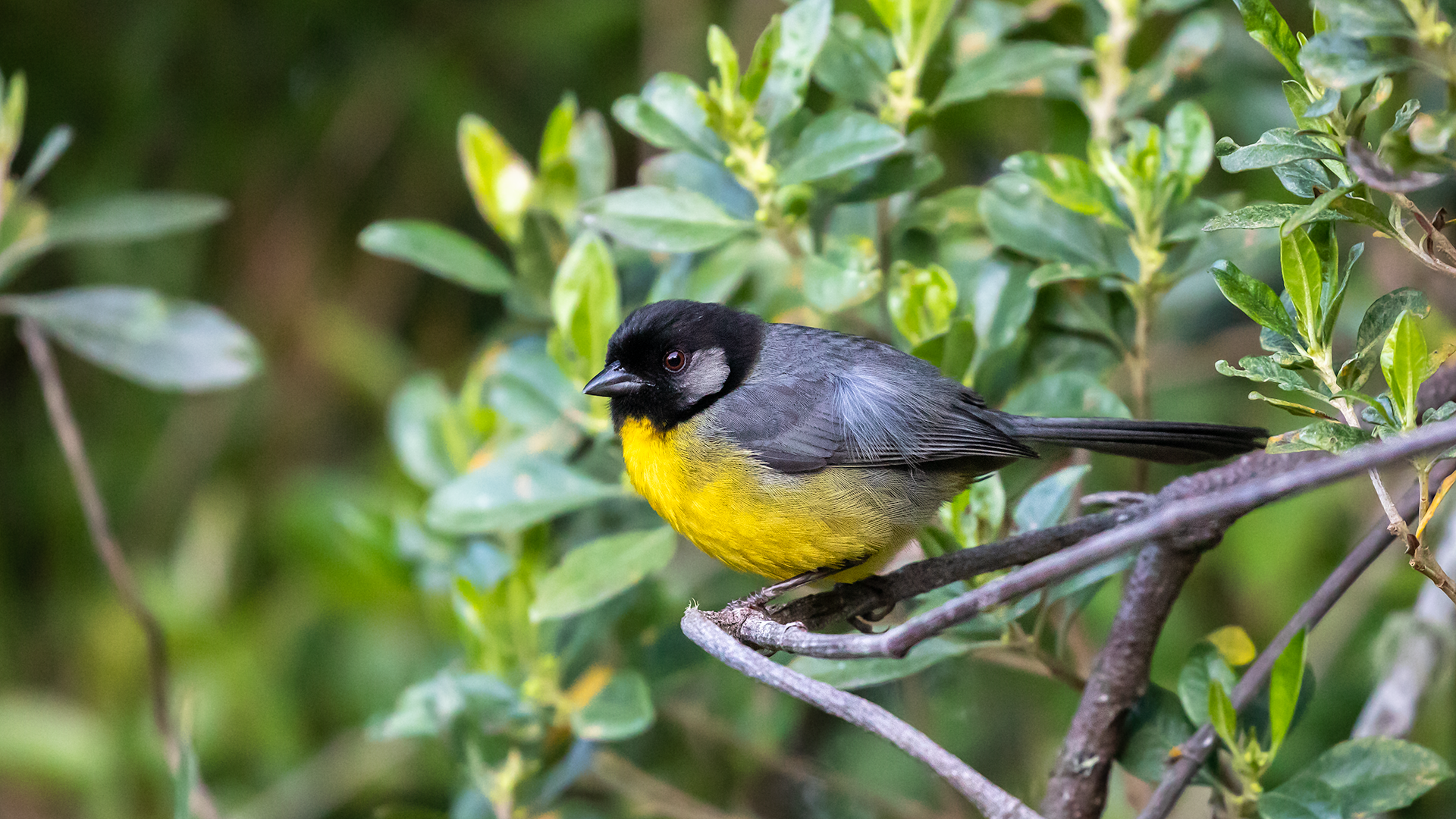
A very distinctive brushfinch endemic to the Santa Marta Mountains of Colombia. It has a simple yet very attractive plumage pattern with a black head, white ear, yellow underparts, and gray back. Nothing similar occurs together with it. Common, bold, and easy to see, inhabiting cloud forest as well as clearings with just scattered trees. It’s often the first endemic encountered by birders visiting this isolated mountain range.
COLOMBIA . Santa Marta . 2022
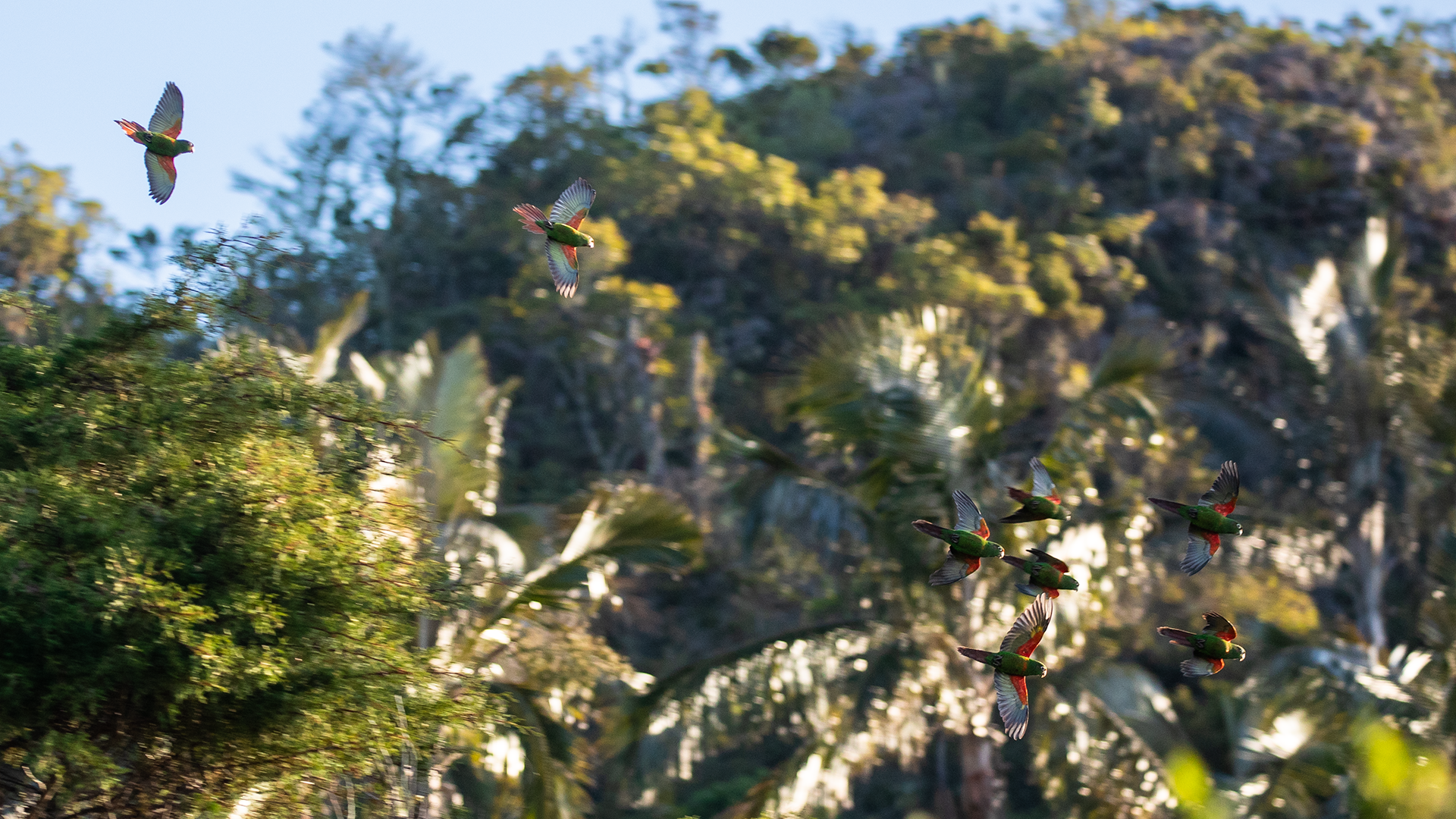
Long tailed and rather plain parakeet endemic to Colombia’s Santa Marta Mountains. The thick, white eye ring and red blotches on face and breast are its best features. Blue and red in wings is mostly concealed with the bird is perched. Typically encountered in small flocks that fly from tree to tree in the cloud forest, screeching loudly. Regularly seen along the San Lorenzo Ridge in El Dorado Nature Reserve, where nest boxes have been placed to improve its breeding success. Also nests and roosts in dead palm trees.
COLOMBIA . Santa Marta . 2022
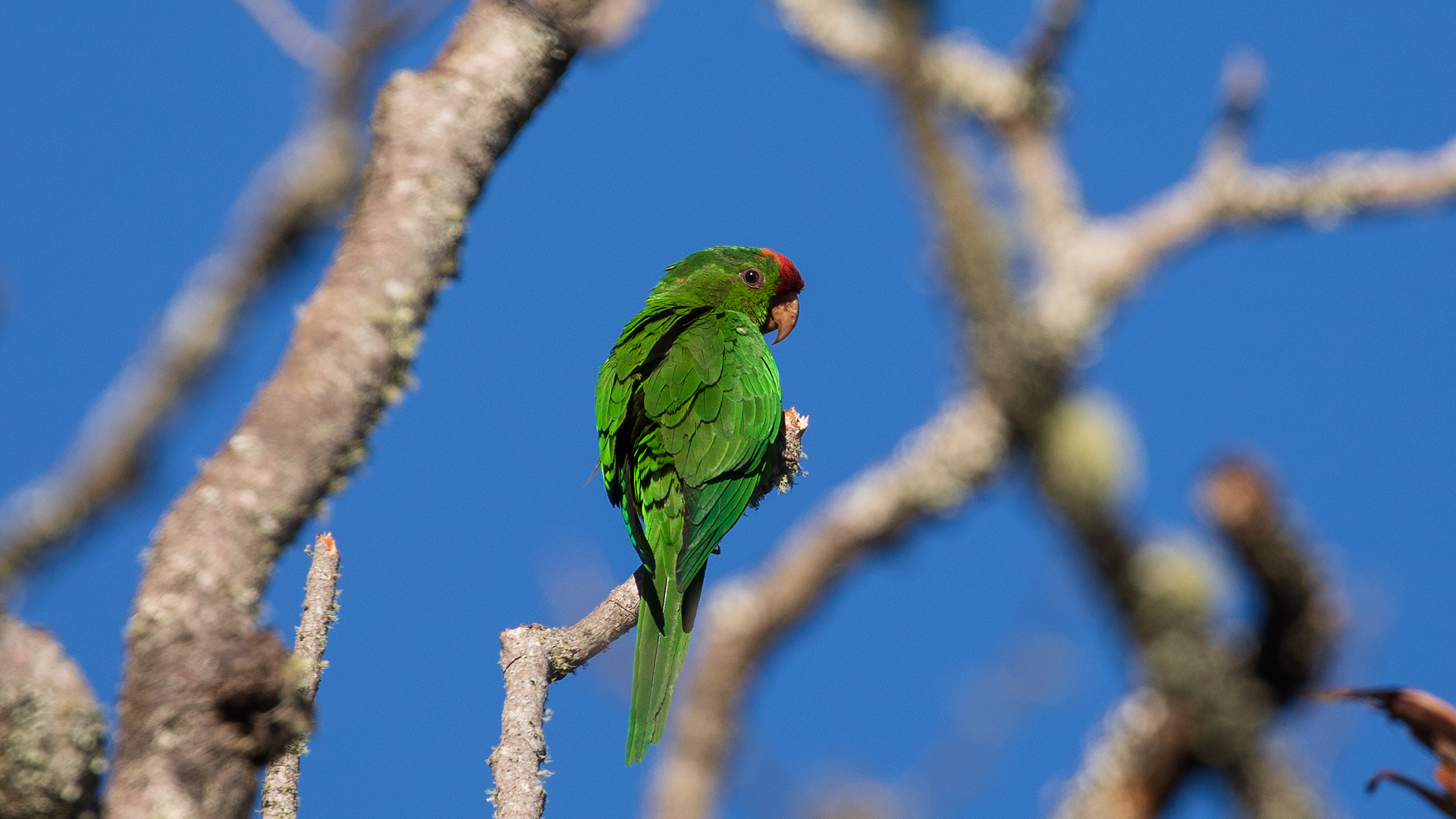
Mostly green parakeet with long pointed tail. Look for isolated red patch on forehead and red shoulders. Sexes similar. Compare similar parakeets like Mitred and Red-masked which show different patterns of red on head. Found in small flocks from around 800-3000m, where they can occur in forest or open patchy woodland. Nests and roosts on cliffs.
COLOMBIA . Santa Marta . 2022
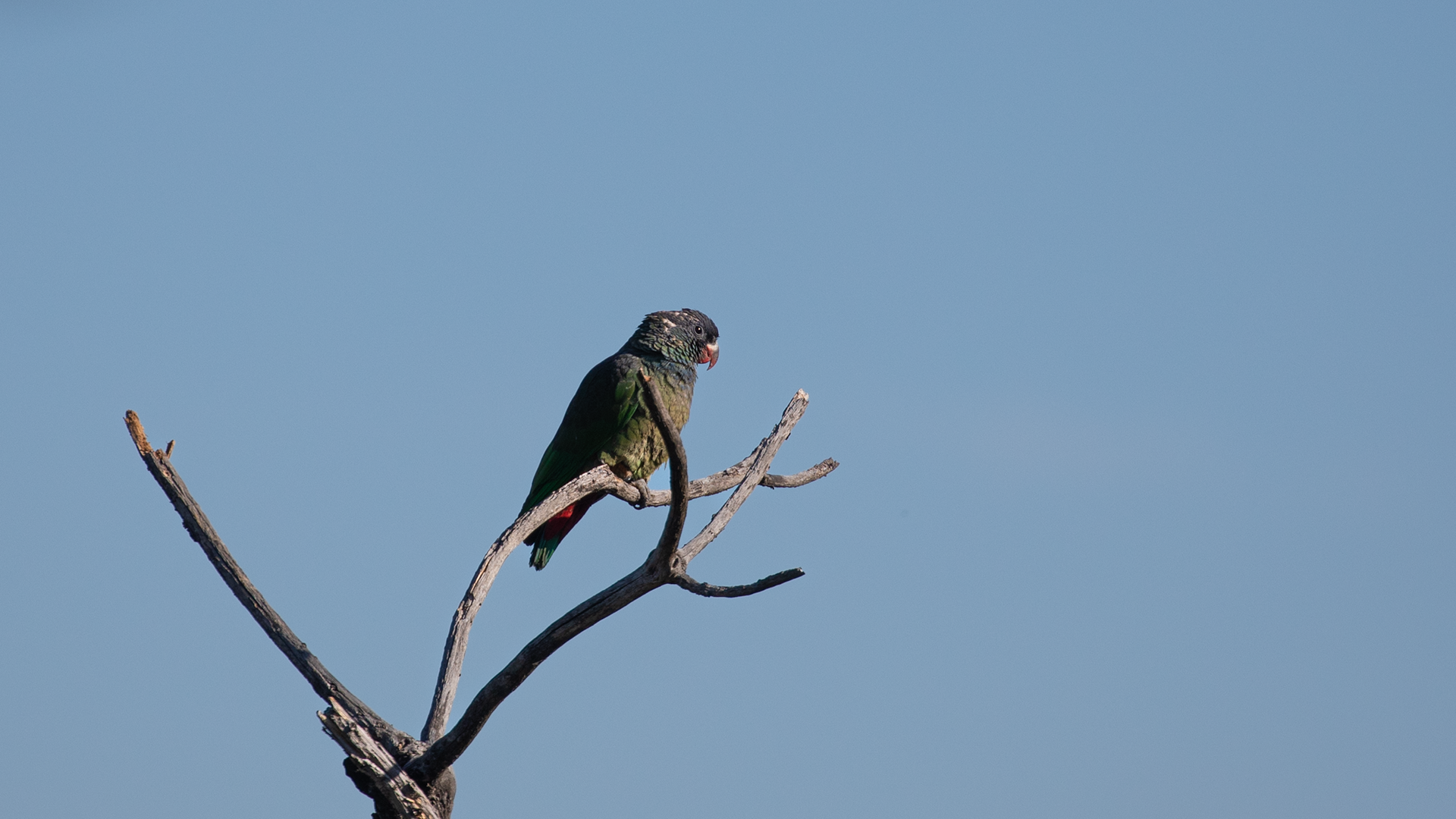
Medium-sized parrot of mid-elevation cloud forest. Plumage is green with red vent, blue breast, and dark blue forecrown. Red bill is usually evident on perched birds, but can be hard to see in flight. Eyering is gray or white and rather indistinct in much of its range. In flight, note deep wingbeats: wingtips almost touch on the downward stroke. Typically encountered in small flocks of up to 10 or 15 birds, occasionally more. Feeds on fruit in the forest canopy.
COLOMBIA . Santa Marta . 2022
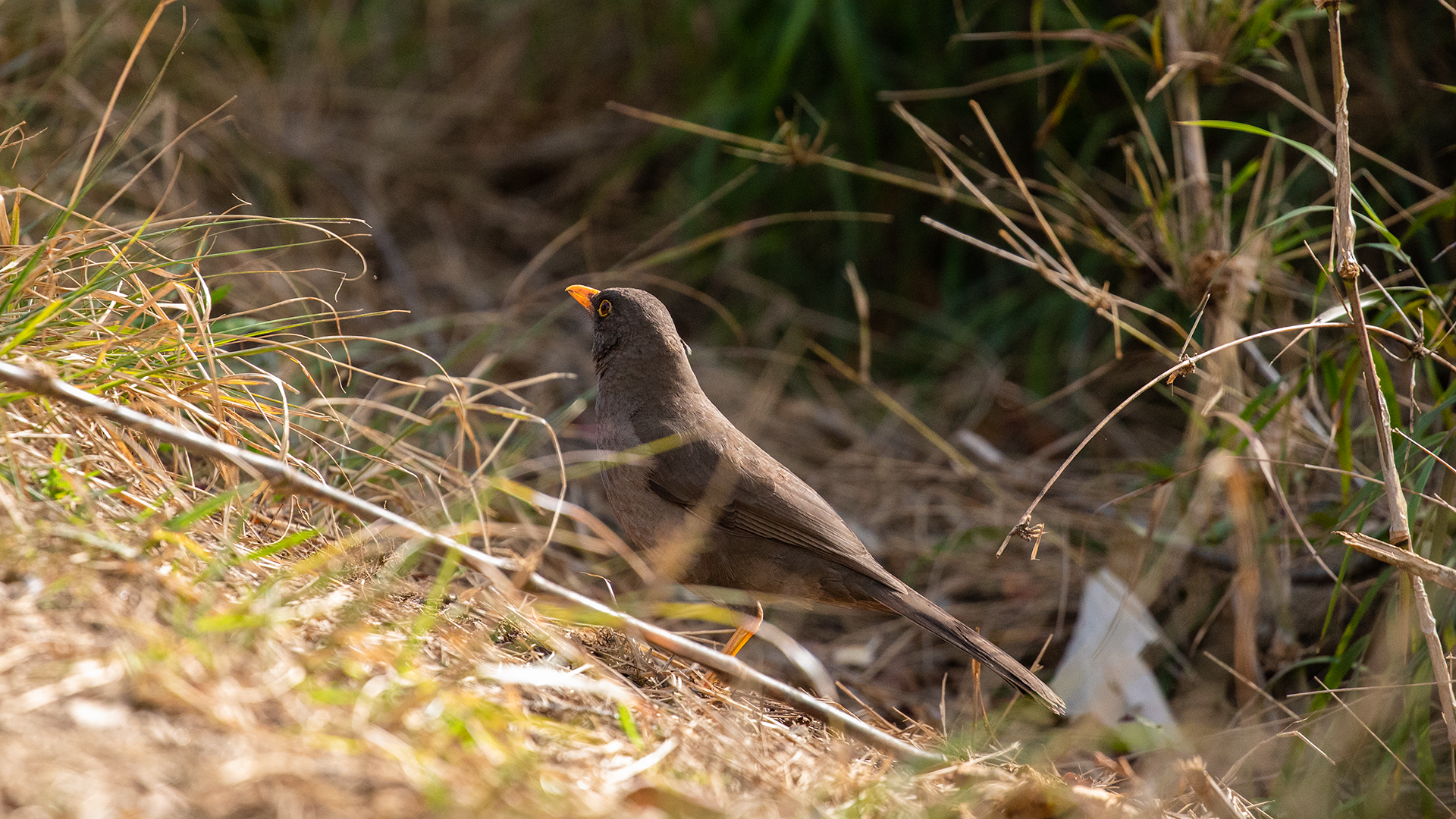
True to its name, Great Thrush is noticeably large, almost recalling a jay rather than a thrush. Brown overall, varying across range from dark blackish to paler grayish-brown. Note orange bill and legs and yellow eyering (males only). Common and conspicuous in highlands from 2,000–4,000 m. Found in open habitats including forest edges, gardens, towns, and cities, where it is often bold and easy to see. Compare with Chiguanco Thrush, which overlaps in some areas. Great Thrush is larger, darker, and males have yellow eyering.
COLOMBIA . Santa Marta . 2022
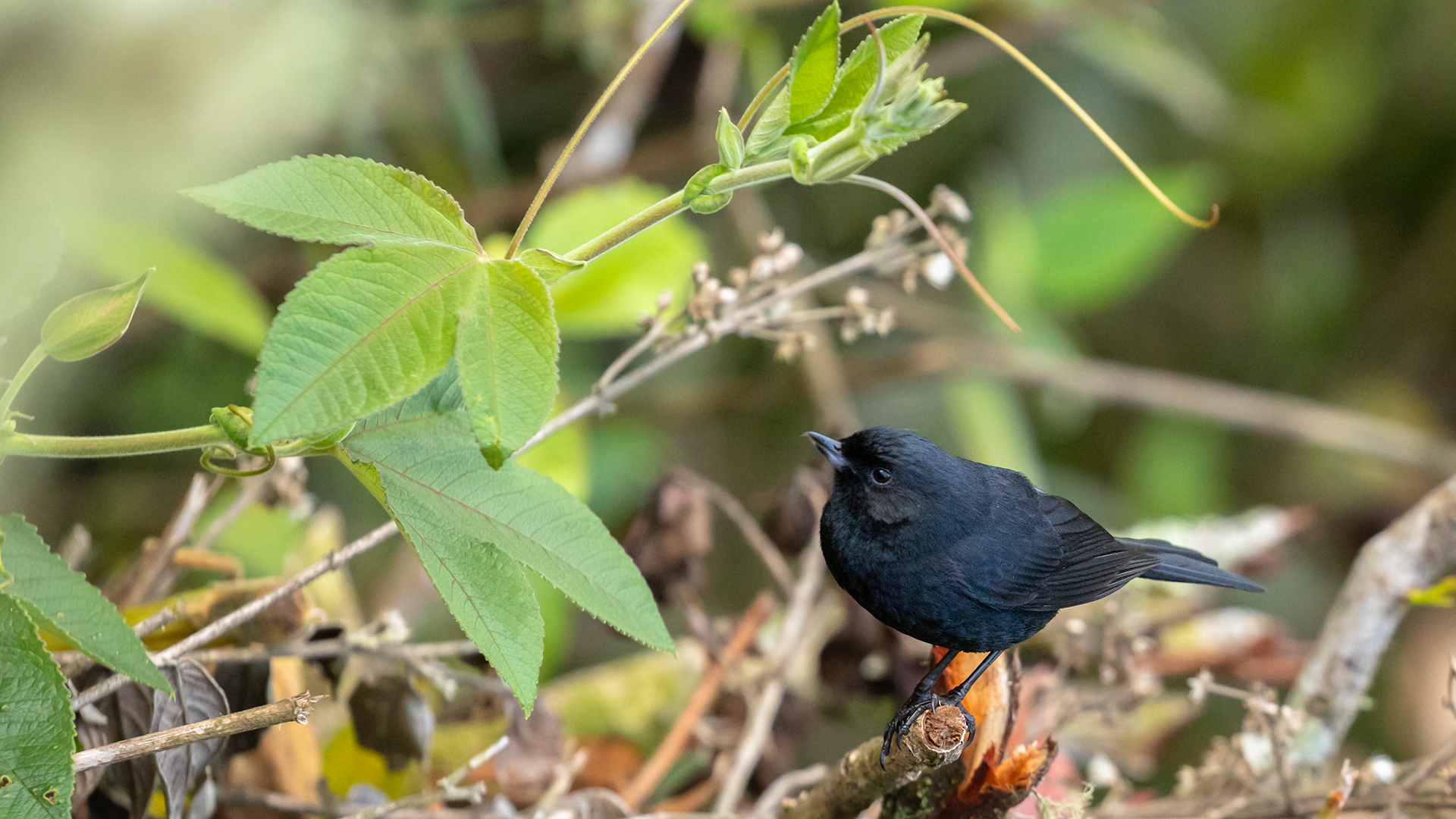
Fairly small flowerpiercer found in the Andes from Venezuela to Peru. Entirely black with typical flowerpiercer bill: uniquely upswept with a hooked tip. In most of range, lacks gray shoulder patch, which helps separate from Glossy Flowerpiercer. However, population in eastern Andes of Colombia do show a gray shoulder patch, but it is smaller and duller than Glossy’s. Black is typically associated with dry scrubby habitats at high elevations, from 2,500-4,500m. Singles or pairs forage at low to middle levels.
COLOMBIA . Santa Marta . 2022
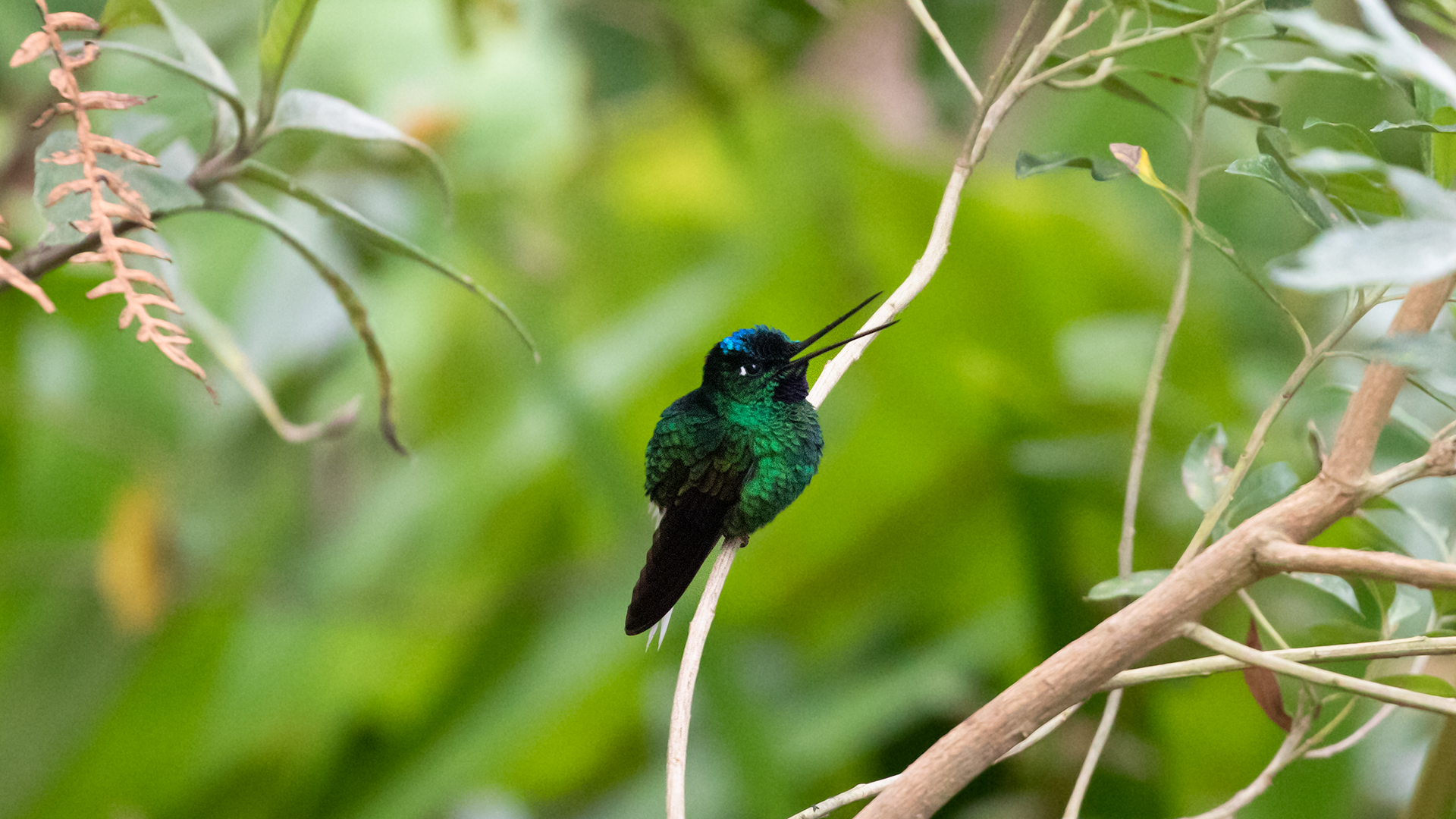
Large, long-billed hummingbird endemic to Colombia’s Santa Marta Mountains. Spectacular male is easily recognized by his brilliant white tail. Female lacks this, but her tawny underparts and lengthy bill still make her easy to ID. Inhabits humid forest at moderately high elevations and feeds on a wide variety of flowers as well as insects and other arthropods. Sometimes visits feeders within El Dorado Nature Reserve.
COLOMBIA . Santa Marta . 2022
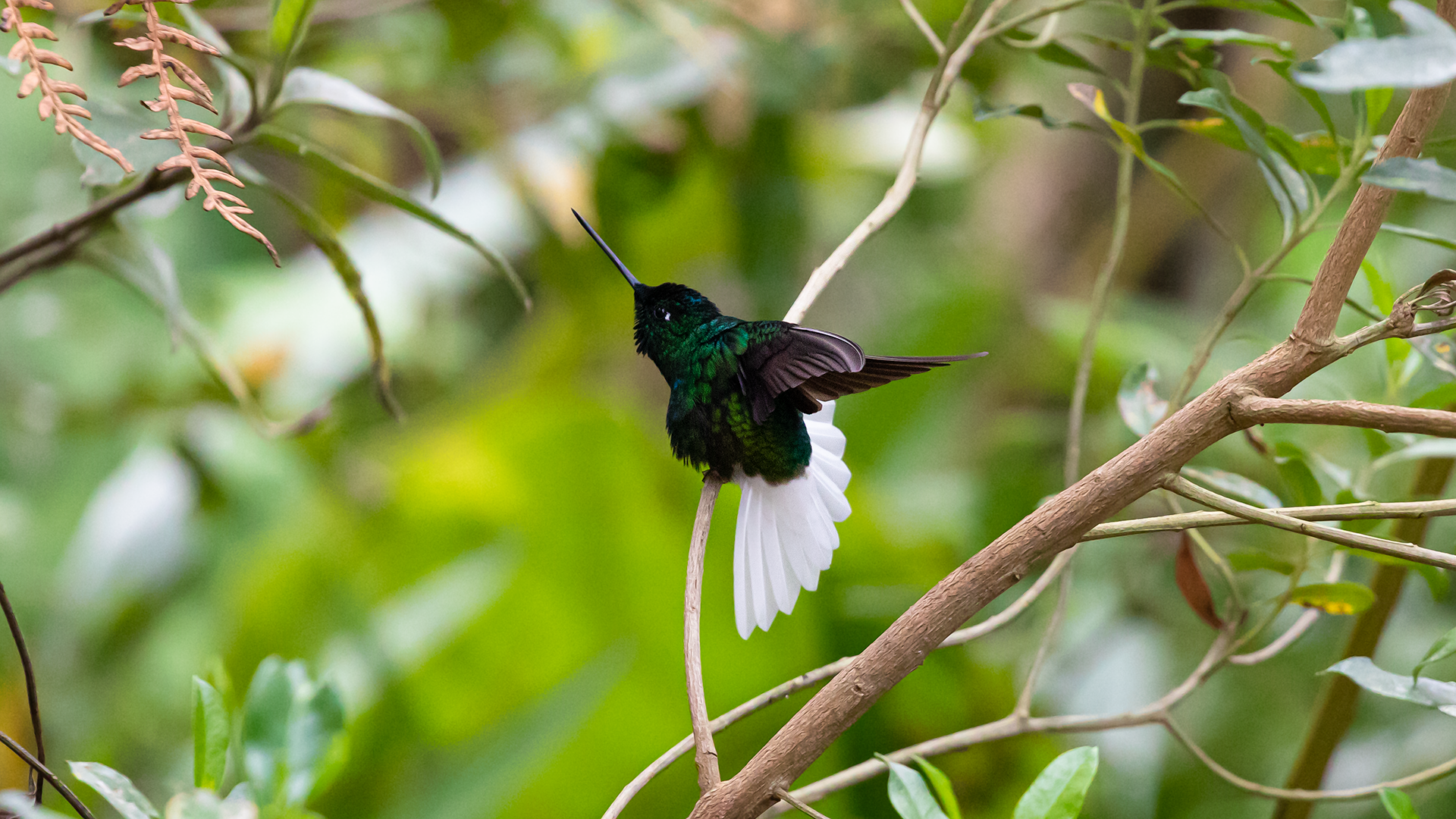
Large, long-billed hummingbird endemic to Colombia’s Santa Marta Mountains. Spectacular male is easily recognized by his brilliant white tail. Female lacks this, but her tawny underparts and lengthy bill still make her easy to ID. Inhabits humid forest at moderately high elevations and feeds on a wide variety of flowers as well as insects and other arthropods. Sometimes visits feeders within El Dorado Nature Reserve.
COLOMBIA . Santa Marta . 2022
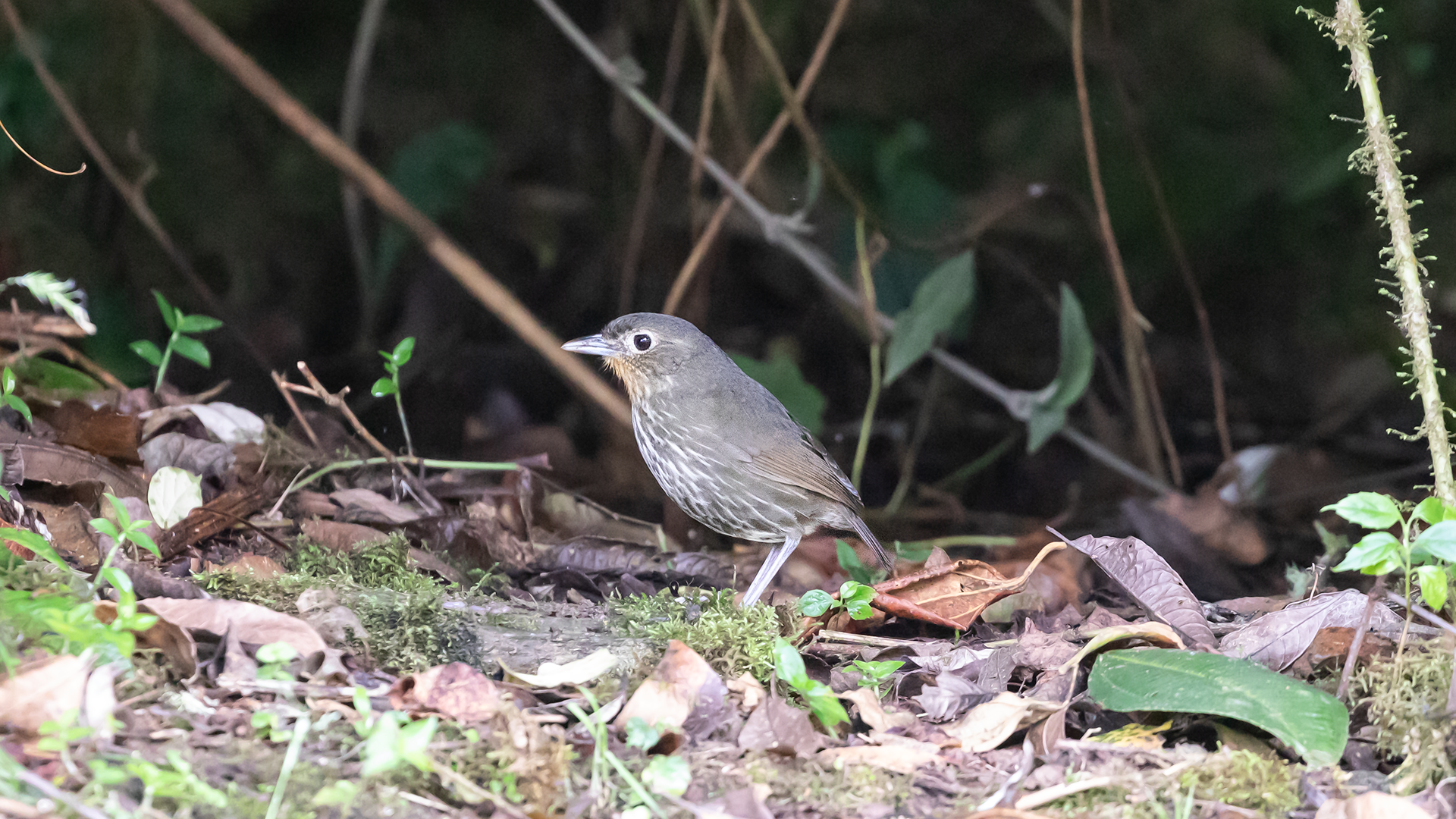
Plump, terrestrial bird found only in the Santa Marta Mountains of Colombia. Like other antpittas, it is short-tailed and long-legged. Orange throat and streaked underparts help separate it from other ground birds. It is shy and normally very hard to see, but sometimes visits feeding stations in and around El Dorado Nature Reserve. Frequently gives two clear, emphatic whistles; the second note is slightly higher in pitch.
COLOMBIA . Santa Marta . 2022
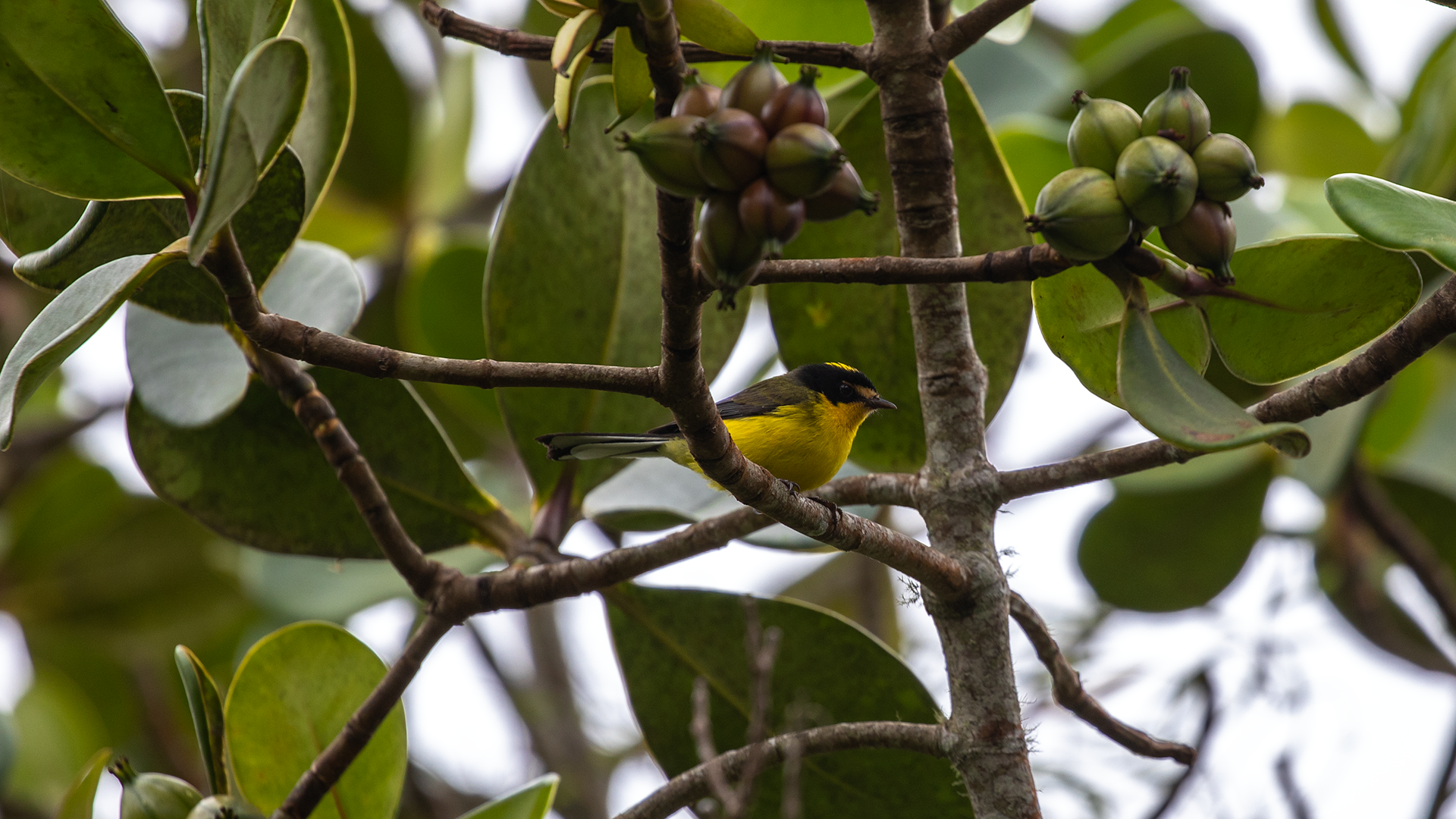
This brushfinch is yellow below and grayish above. The forecrown is tawny, fading to white on the nape. No other brushfinch is yellow below with a white nape. A high elevation species, occurring in scrubby habitats and forest edge from around 2,700-3,700m. Pairs usually forage at lower levels, sometimes accompanying a mixed-species flock.
COLOMBIA . Santa Marta . 2022
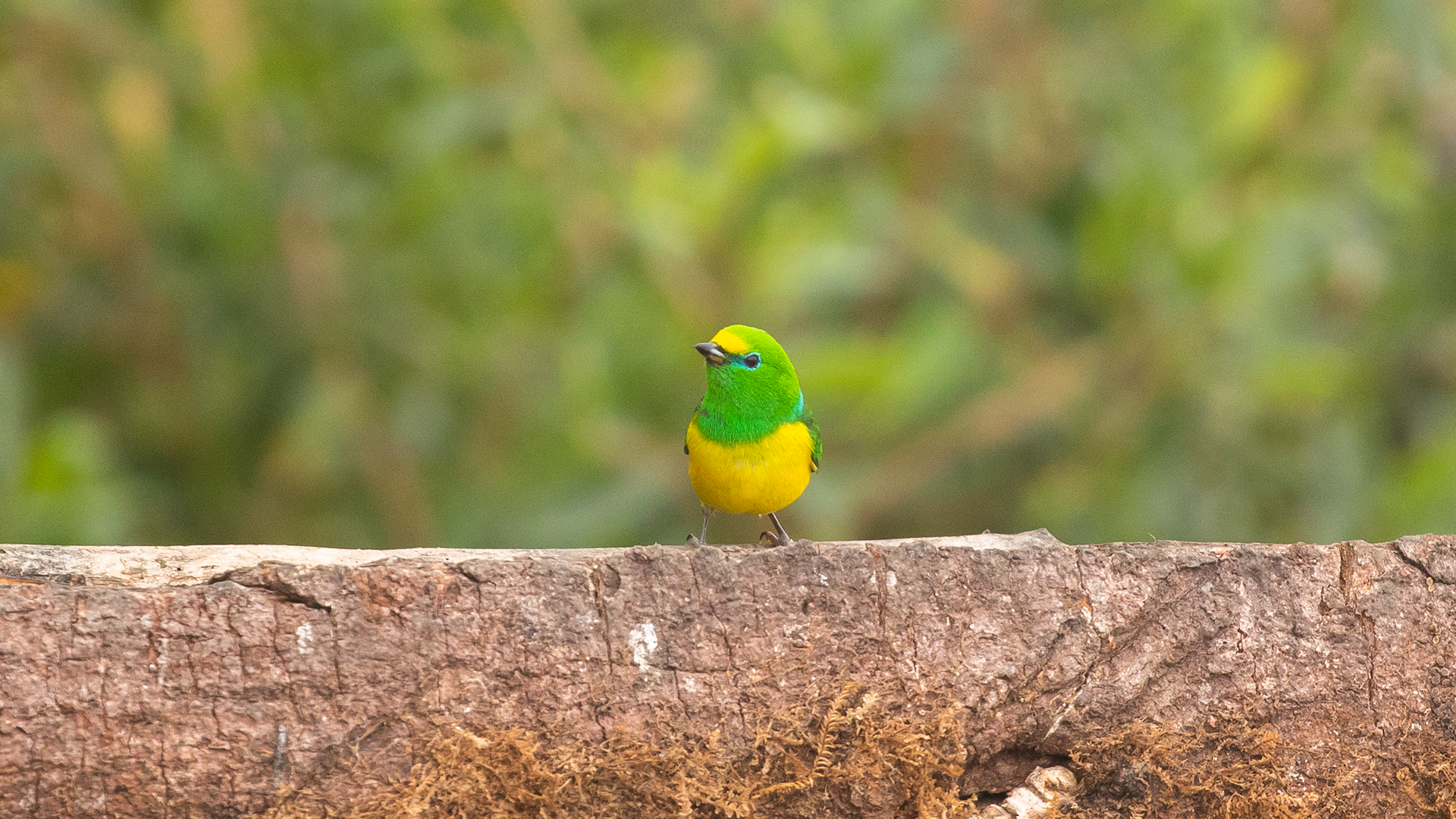
Small, plump bird with stout bill. Male mostly lime green with contrasting yellow belly and thin blue collar on nape and blue rump; some populations entirely blue above. Female similar but duller, with greener belly. Usually seen in pairs or small flocks, often in association with a fruiting tree. Forages at all levels, most frequently in the canopy. Listen for its plaintive whistles, usually one or two notes.
COLOMBIA . Santa Marta . 2022
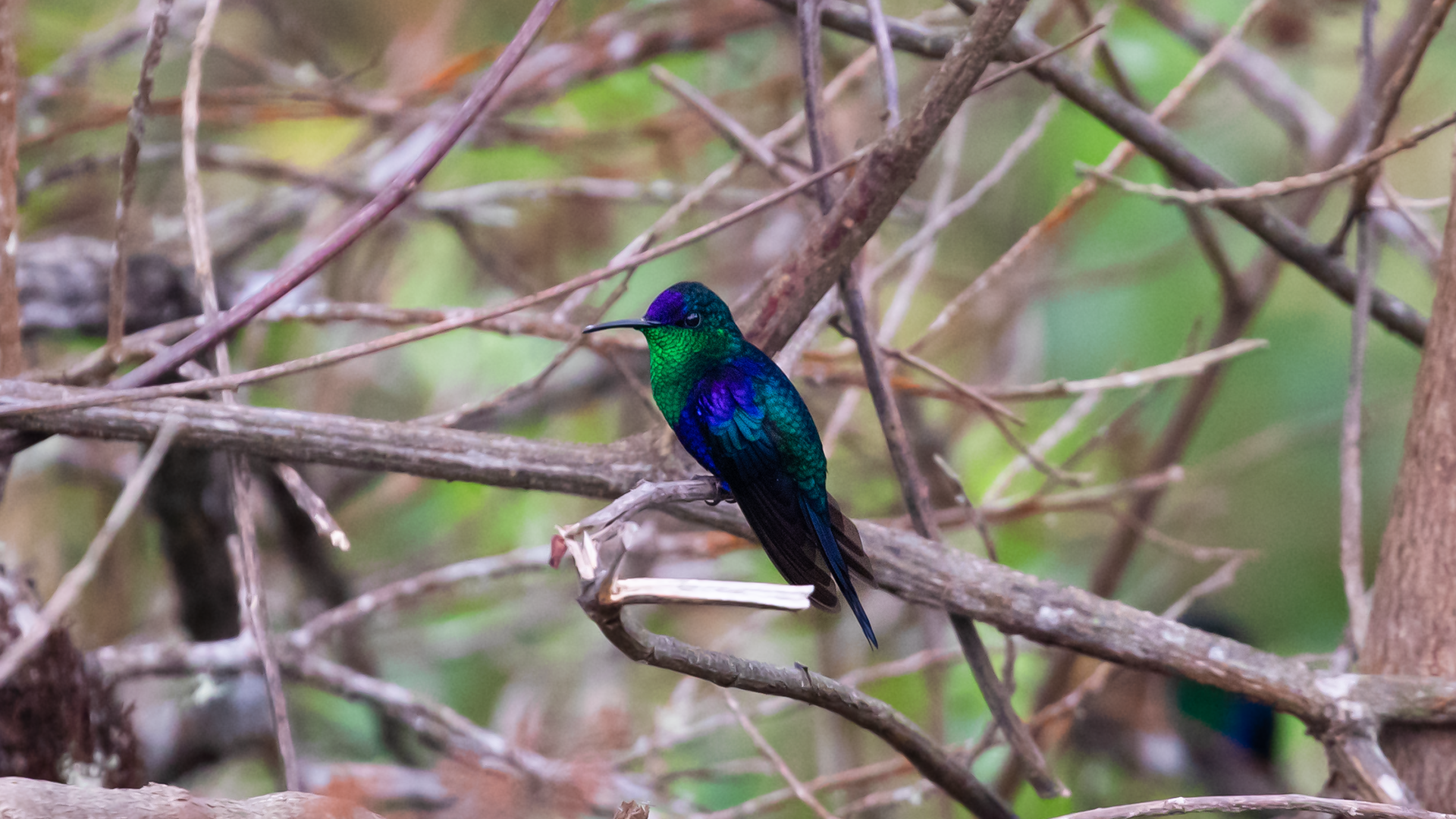
Favors evergreen forest and edge in tropical lowlands, often near streams. Feeds mainly at low to middle levels in shady understory, but comes to feeders at edges and in clearings. Male is stunning but often looks all dark: note the fairly long, deeply forked tail and brilliant emerald and violet plumage. Female rather dull and plain: note the black bill, green-mottled flanks, and blue-black tail with whitish corners.
COLOMBIA . Santa Marta . 2022

A pale-faced and short-crested guan with a red throat and dark brown body with contrasting fine white streaks. Face markings are distinctive: has a long pale eyebrow and whitish moustache and cheeks; also shows bare bluish gray skin around the eye and a dull rufous tipped tail. Sexes similar. Common in the canopy of cloud forest, generally in groups resting or foraging for fruits. Often very quiet, but easy to see when flying awkwardly from a tree or vocalizing. The alarm call is a soft piping whistle or a loud gruff and harsh burst of calls; also gives a wing-rattle display, common just before sunrise or after sunset. Found only in Colombia and Venezuela.
COLOMBIA . Santa Marta . 2022
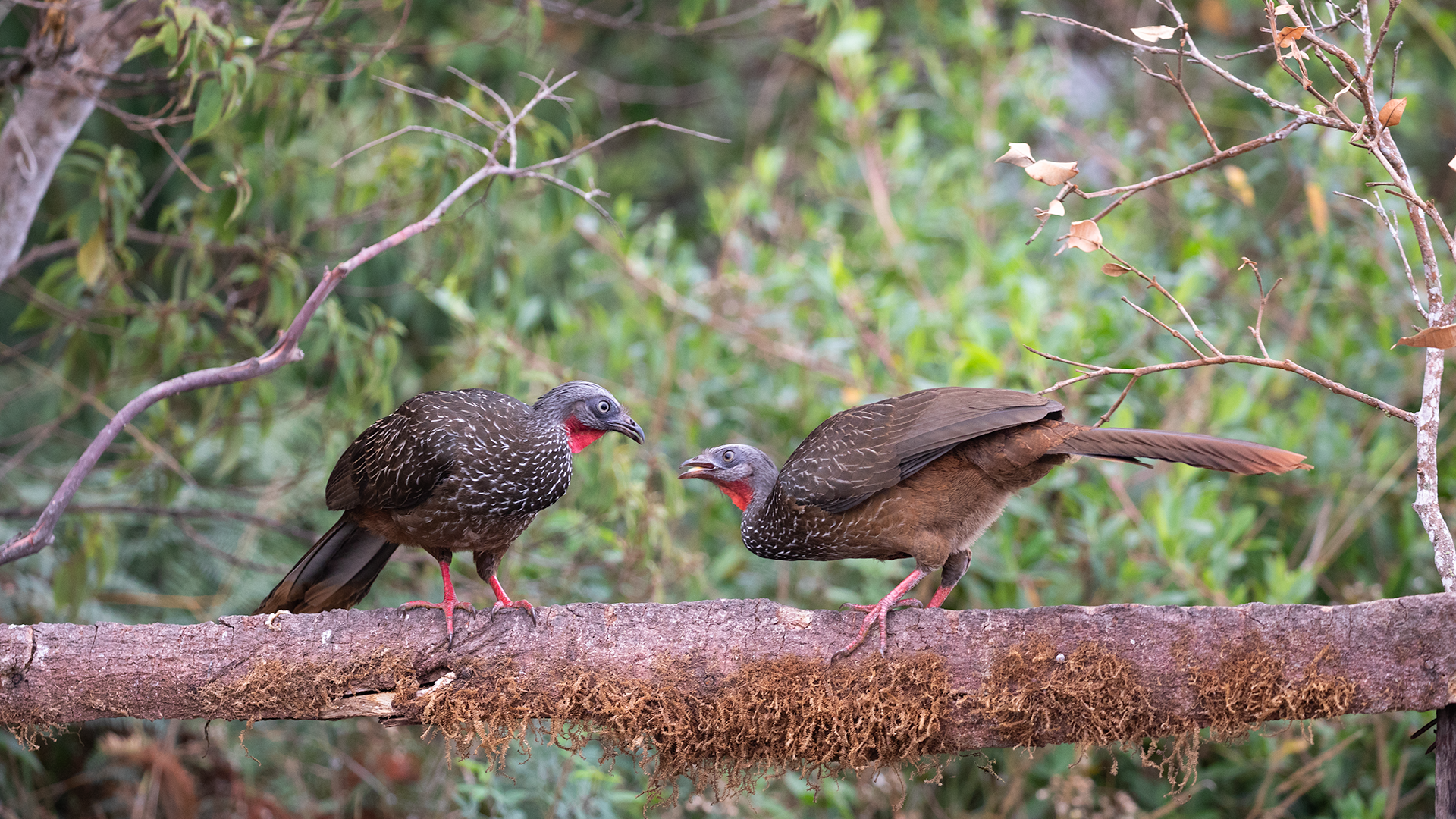
A pale-faced and short-crested guan with a red throat and dark brown body with contrasting fine white streaks. Face markings are distinctive: has a long pale eyebrow and whitish moustache and cheeks; also shows bare bluish gray skin around the eye and a dull rufous tipped tail. Sexes similar. Common in the canopy of cloud forest, generally in groups resting or foraging for fruits. Often very quiet, but easy to see when flying awkwardly from a tree or vocalizing. The alarm call is a soft piping whistle or a loud gruff and harsh burst of calls; also gives a wing-rattle display, common just before sunrise or after sunset. Found only in Colombia and Venezuela.
COLOMBIA . Santa Marta . 2022
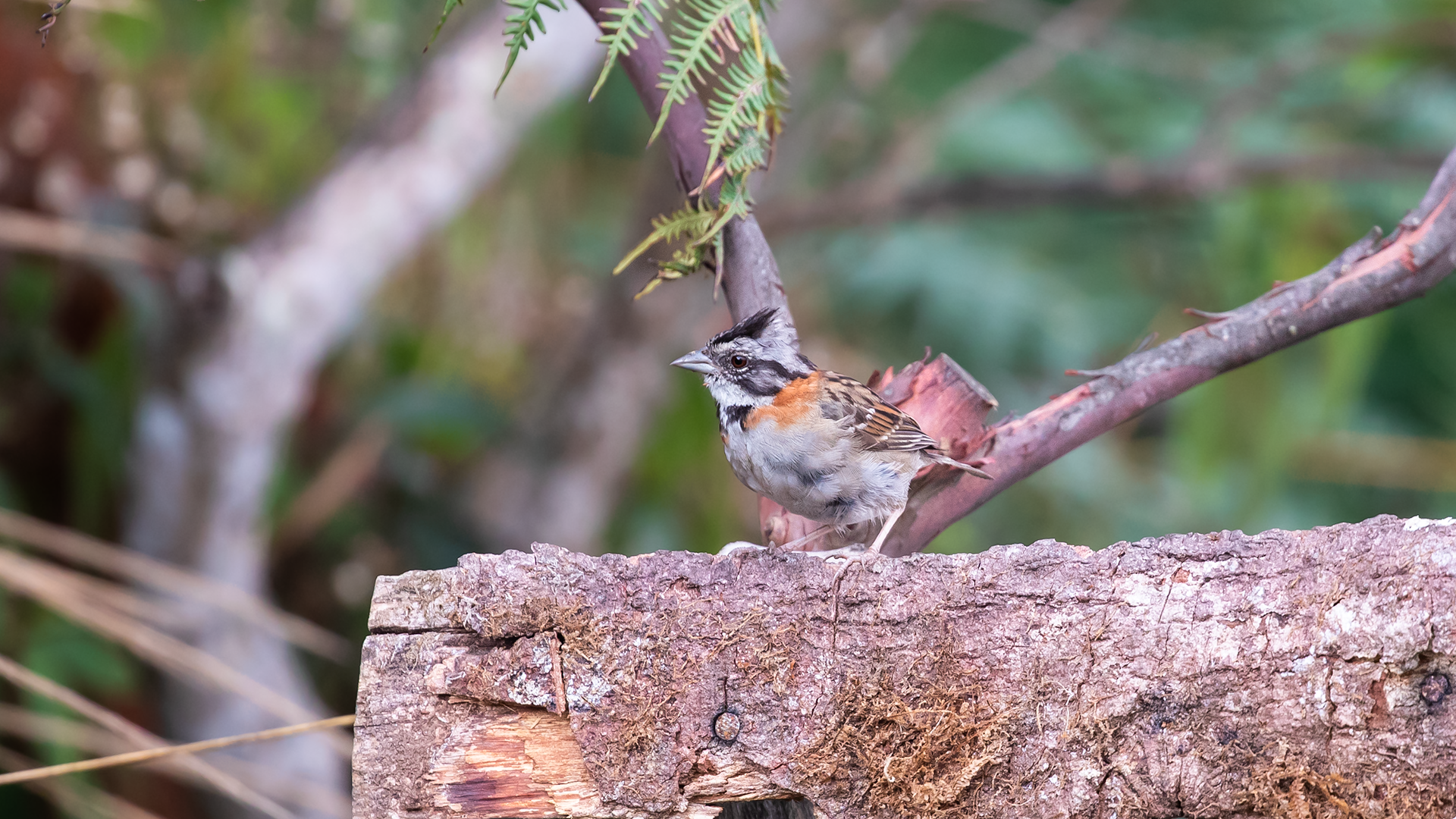
Handsomely patterned sparrow from highlands of Chiapas south to temperate South America. Occurs in open and semiopen habitats such as villages, towns, and farmland with hedges and brushy thickets. Feeds on the ground and in bushes, at times in flocks. Note the peaked crown, bold black-and-gray head pattern (though black much reduced in southern populations), bright rusty collar, and black chest patch. Juvenile has ghosting of adult pattern and breast is streaked dusky.
COLOMBIA . Santa Marta . 2022
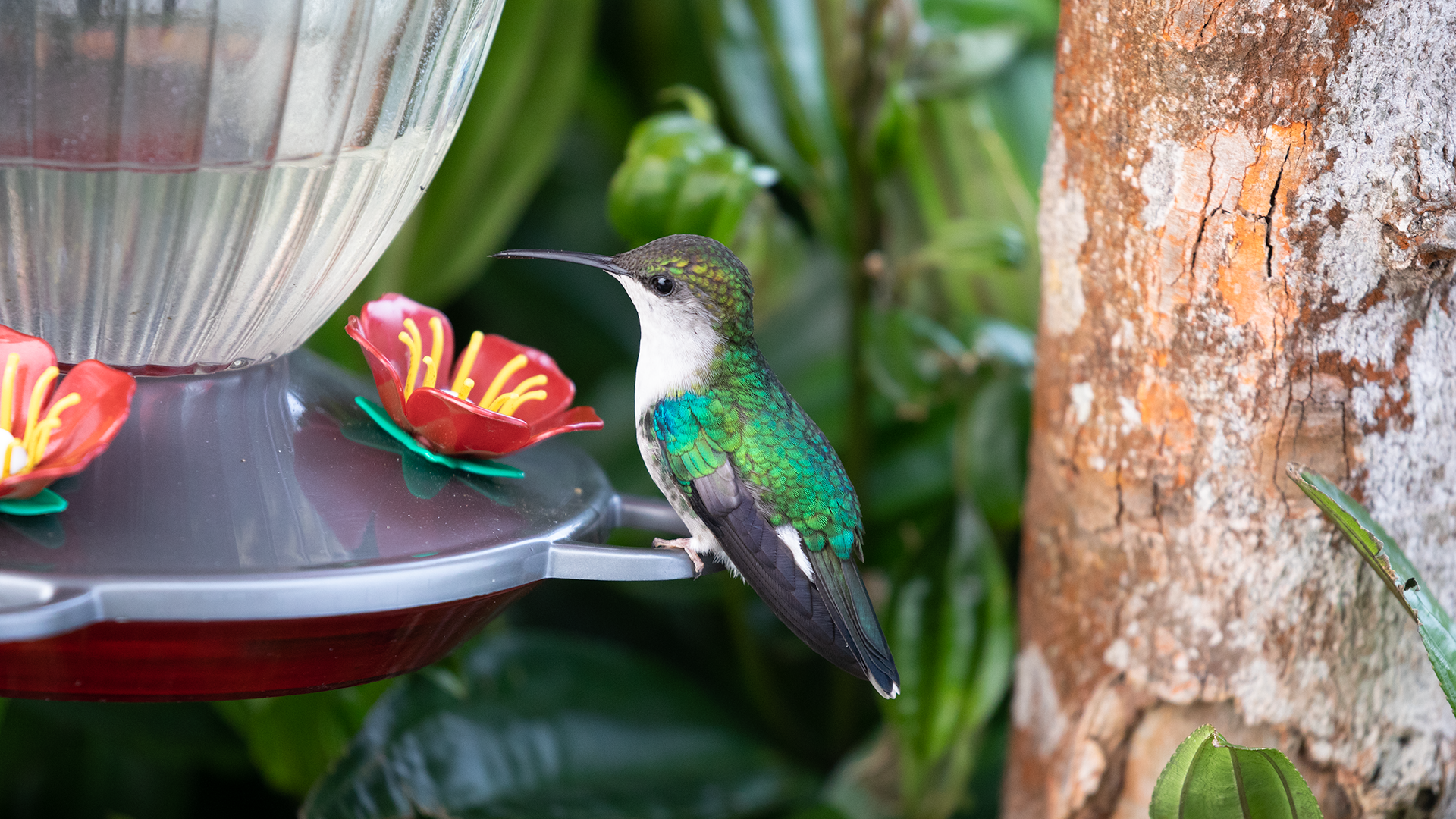
Fairly small fork-tailed hummingbird of lowlands. Males have an iridescent green head and breast and a violet belly, but in poor light appears evenly dark overall. Females are green above, light gray below. Note the slightly drooping bill on both sexes. One of the most common hummingbirds in lowland Amazonia; found in a variety of open forested habitats from young rainforest and forest edges to treefall gaps and gardens.
COLOMBIA . Santa Marta . 2022
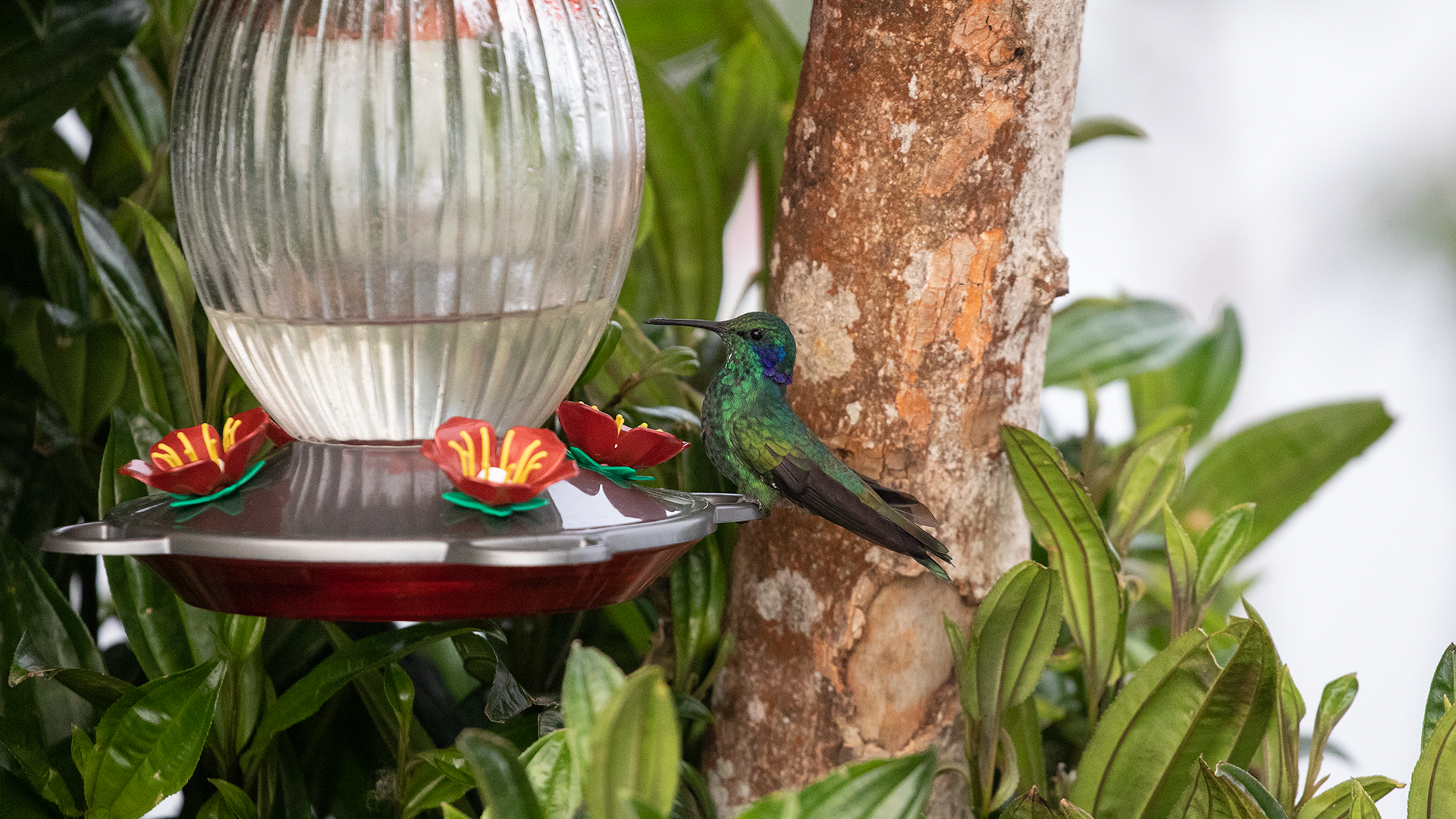
Large aggressive hummingbird that usually dominates feeders or flower patches. Sparkling green overall with purplish-blue patches on cheeks and belly. Sexes alike. Larger than Lesser Violetear, and that species lacks the purple belly. Common and widespread in the Andes. Uses open habitats, including forest edge, shrubby agricultural land, and towns and cities. Found from 400–4,500 m; most common from the subtropical zone up to high elevation scrub and dry valleys, but also wanders low into foothills. Listen for the incessant song, a never-ending series of metallic chip notes.
COLOMBIA . Santa Marta . 2022

A pale-faced and short-crested guan with a red throat and dark brown body with contrasting fine white streaks. Face markings are distinctive: has a long pale eyebrow and whitish moustache and cheeks; also shows bare bluish gray skin around the eye and a dull rufous tipped tail. Sexes similar. Common in the canopy of cloud forest, generally in groups resting or foraging for fruits. Often very quiet, but easy to see when flying awkwardly from a tree or vocalizing. The alarm call is a soft piping whistle or a loud gruff and harsh burst of calls; also gives a wing-rattle display, common just before sunrise or after sunset. Found only in Colombia and Venezuela.
COLOMBIA . Santa Marta . 2022
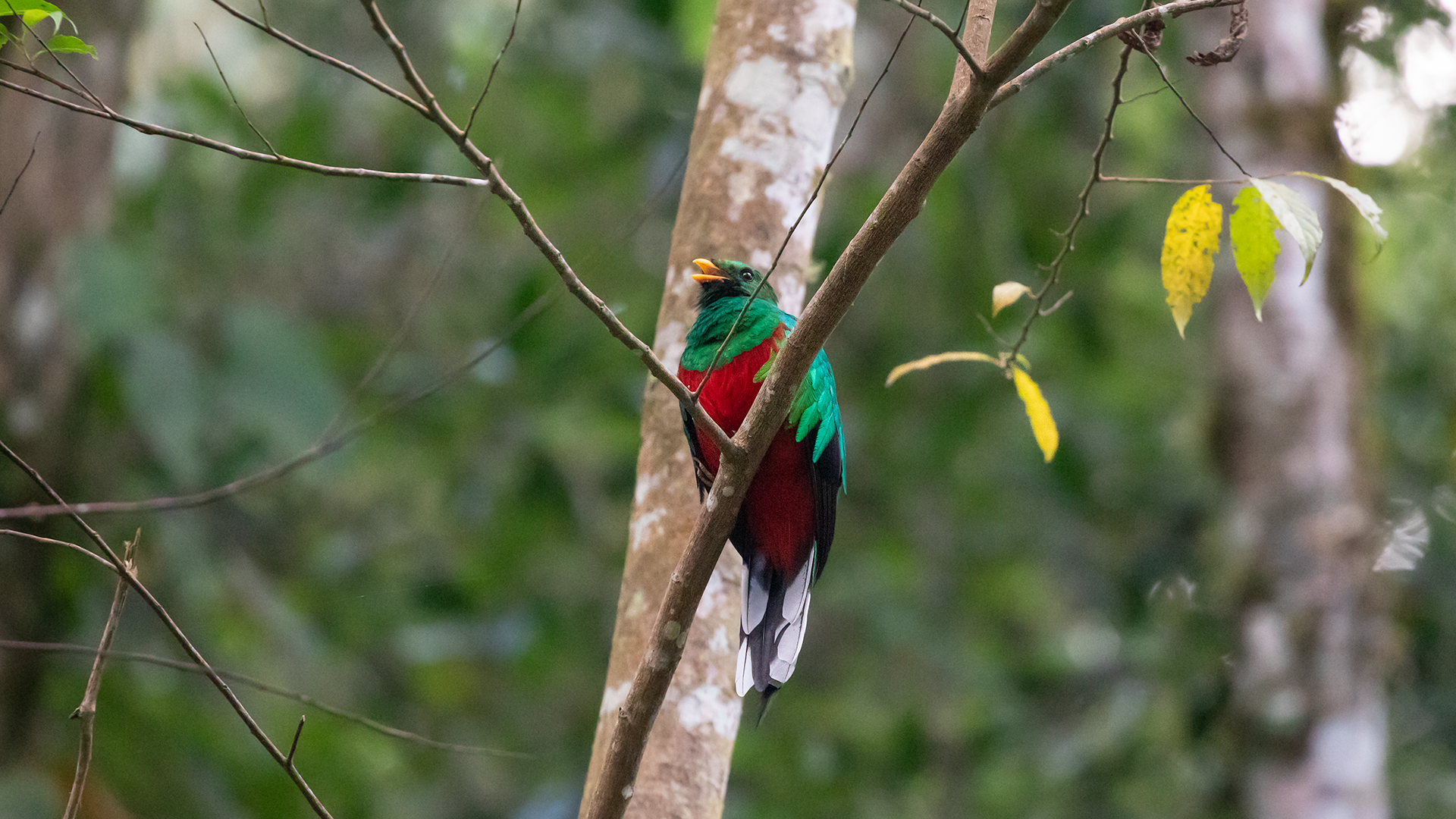
Elegant large trogon with a black tail tipped with white below, and lacking a crest. Has golden-tinged green upperparts and breast and bright red belly; bill is yellow. Female has a gray bill, gray-brown lower breast, and white barred undertail with white tips. No overlap with other quetzal species, and larger than other trogons in range. Fairly common in tall mature cloud forest, often alone or in pairs but sometimes in groups at fruiting trees. Perches at medium to high levels in the forest. Song is a loud and melancholic series of “WHOOOou hoo hoou”; call is similar to that of Barred Forest-Falcon.
COLOMBIA . Santa Marta . 2022
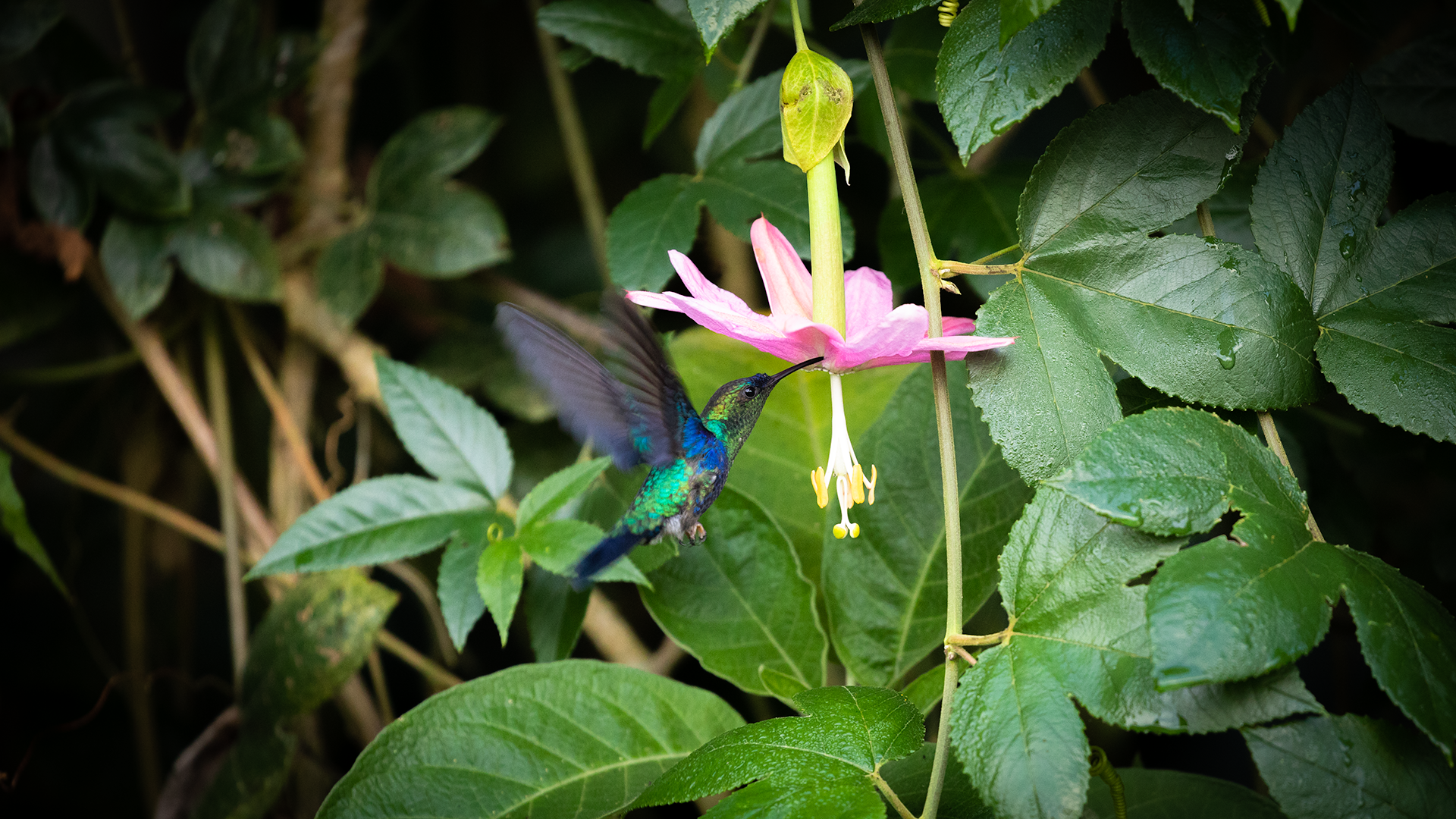
Favors evergreen forest and edge in tropical lowlands, often near streams. Feeds mainly at low to middle levels in shady understory, but comes to feeders at edges and in clearings. Male is stunning but often looks all dark: note the fairly long, deeply forked tail and brilliant emerald and violet plumage. Female rather dull and plain: note the black bill, green-mottled flanks, and blue-black tail with whitish corners.
COLOMBIA . Santa Marta . 2022
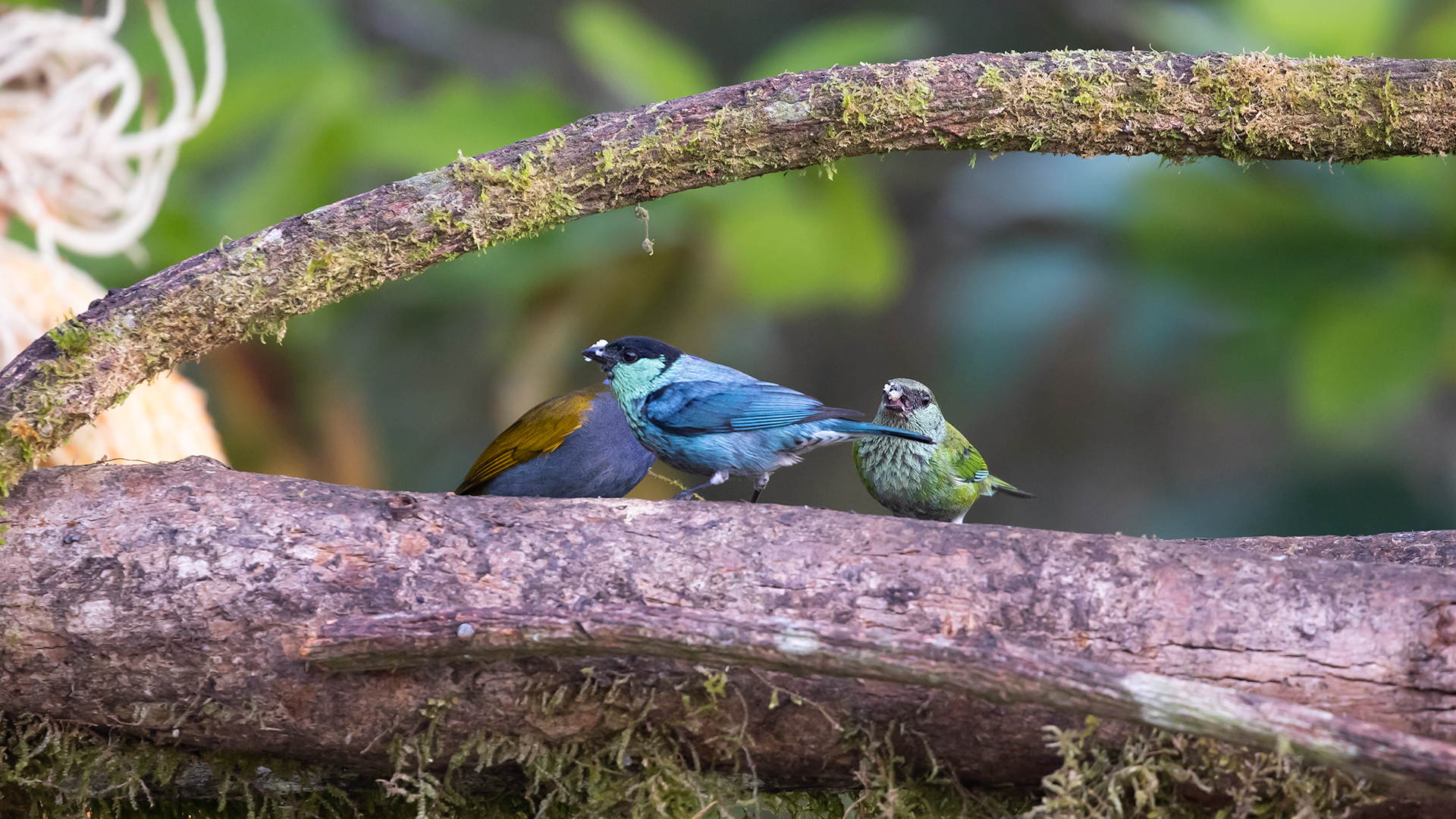
Small, active tanager with notably different male and female plumages. Male is steely blue overall with slightly darker wings. Look for sea-green throat and cheek, streaked upper breast, and contrasting black cap and nape. Female is mostly lime green with pale bluish head and breast; she has just a ghosting of the male’s black cap. Usually found in pairs, often following a mixed-species flock in the canopy. An Andean species, found in subtropical forest, edges, and gardens. Visits fruit feeders.
COLOMBIA . Santa Marta . 2022
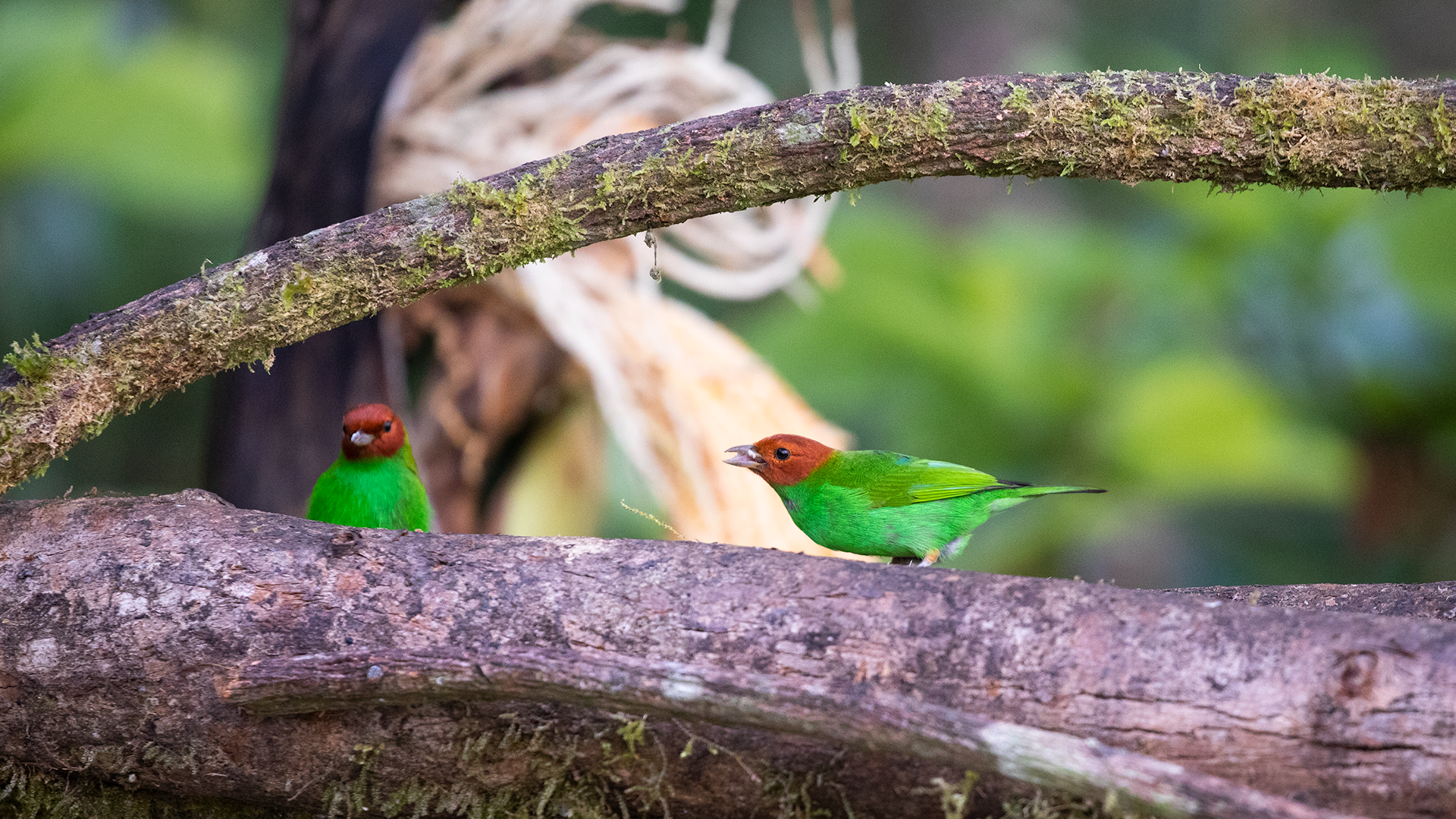
Stunning tanager: mostly green with reddish head. Some populations have electric blue underparts, others entirely green. Similar to Rufous-winged Tanager but always has green wings. Found in pairs or small flocks in forest and edges, often in mixed feeding flocks from midstory to the canopy. Feeds on fruit.
COLOMBIA . Santa Marta . 2022
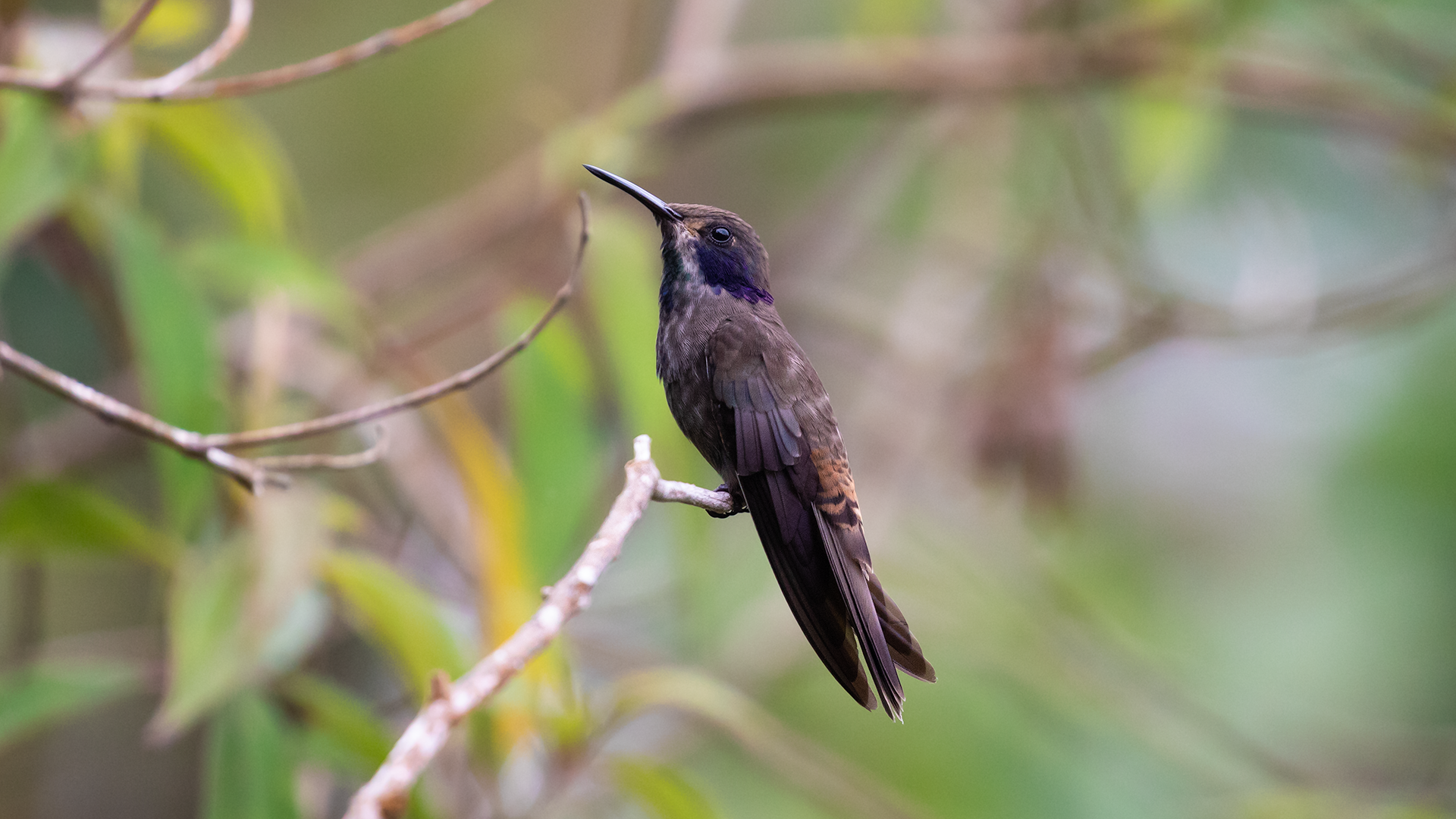
Uncommon, rather large but drab, fairly short-billed hummingbird of tropical and subtropical forest and edge. Can be aggressive when defending flower patches from most other hummingbirds. Occurs mainly in foothills, ranging seasonally down to lowlands. Sexes similar: overall grayish brown with a broad pale mustache, dark throat patch, and dark violet ear patches that can be raised. Tail has a broad blackish subterminal band and rump feathers have bright rusty edgings.
COLOMBIA . Santa Marta . 2022
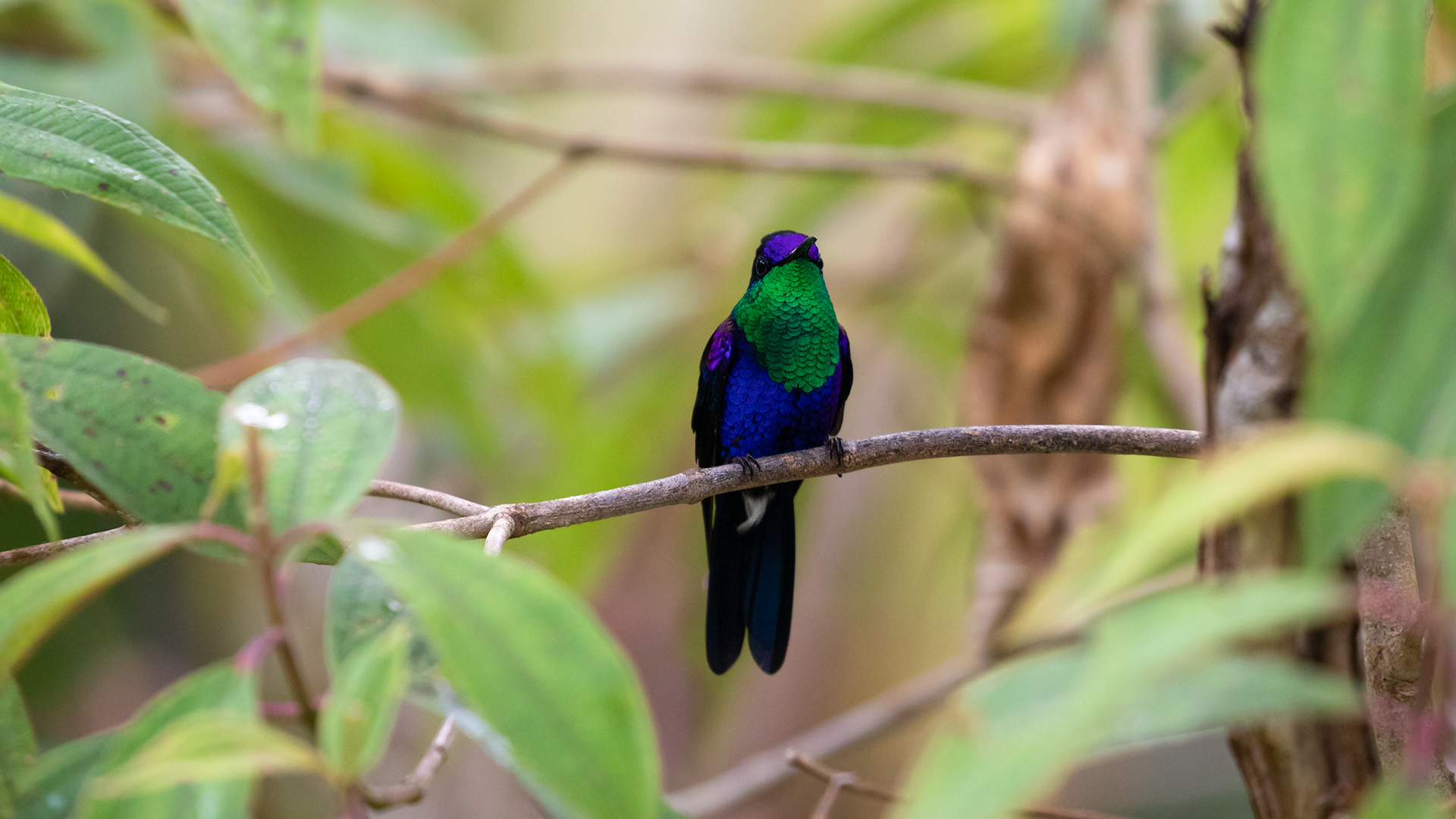
Favors evergreen forest and edge in tropical lowlands, often near streams. Feeds mainly at low to middle levels in shady understory, but comes to feeders at edges and in clearings. Male is stunning but often looks all dark: note the fairly long, deeply forked tail and brilliant emerald and violet plumage. Female rather dull and plain: note the black bill, green-mottled flanks, and blue-black tail with whitish corners.
COLOMBIA . Santa Marta . 2022
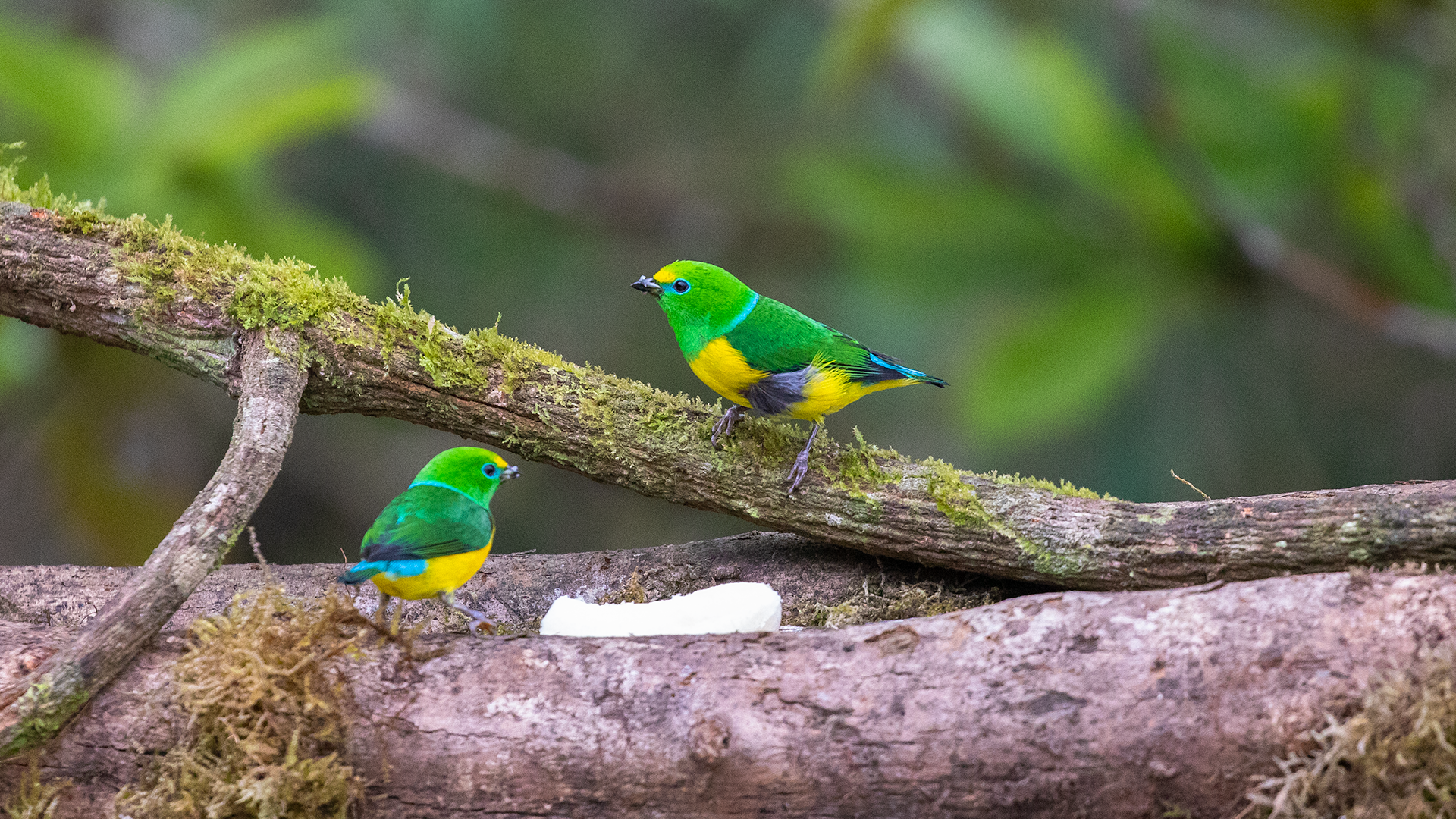
Small, plump bird with stout bill. Male mostly lime green with contrasting yellow belly and thin blue collar on nape and blue rump; some populations entirely blue above. Female similar but duller, with greener belly. Usually seen in pairs or small flocks, often in association with a fruiting tree. Forages at all levels, most frequently in the canopy. Listen for its plaintive whistles, usually one or two notes.
COLOMBIA . Santa Marta . 2022
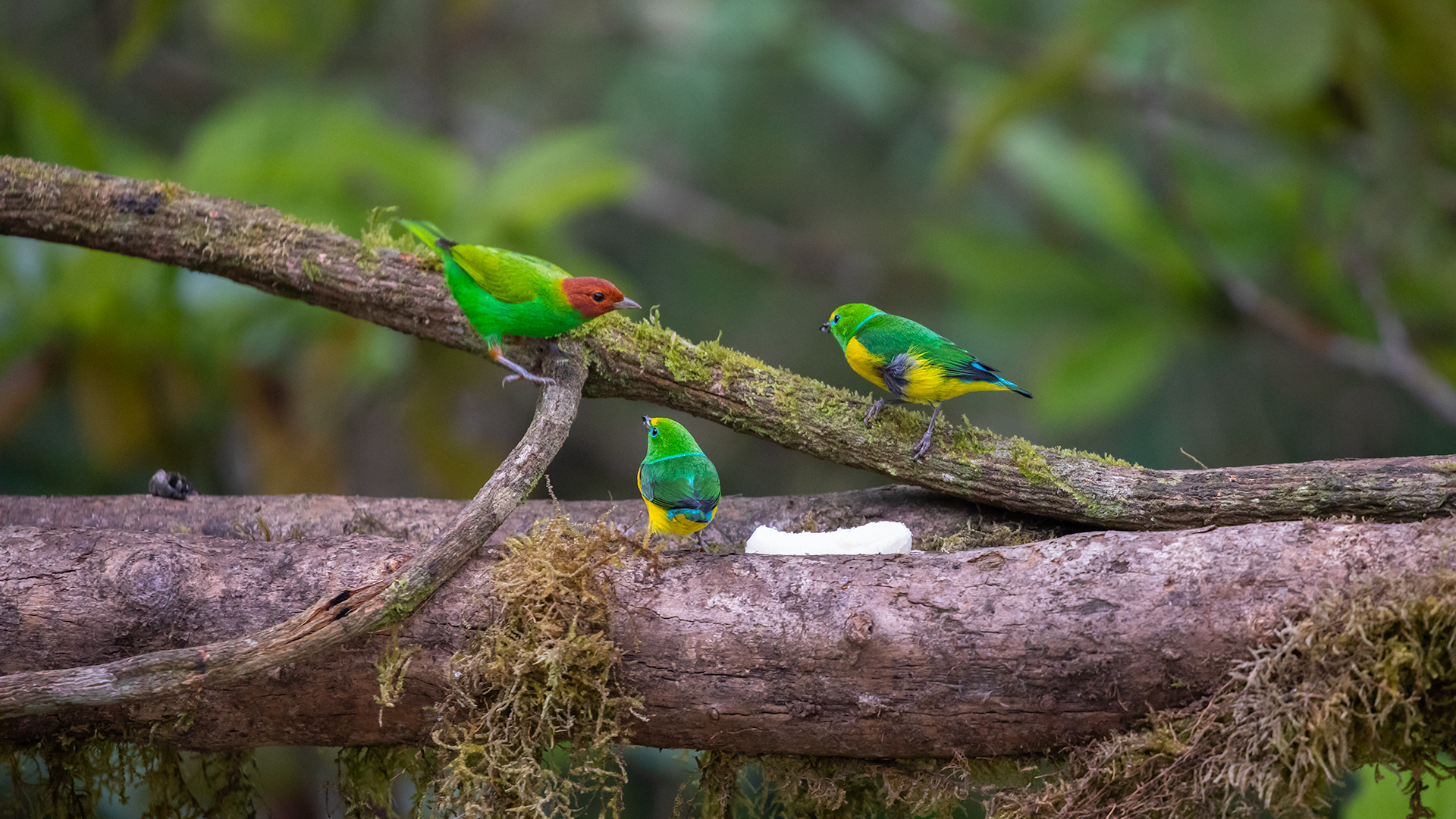
Stunning tanager: mostly green with reddish head. Some populations have electric blue underparts, others entirely green. Similar to Rufous-winged Tanager but always has green wings. Found in pairs or small flocks in forest and edges, often in mixed feeding flocks from midstory to the canopy. Feeds on fruit.
COLOMBIA . Santa Marta . 2022
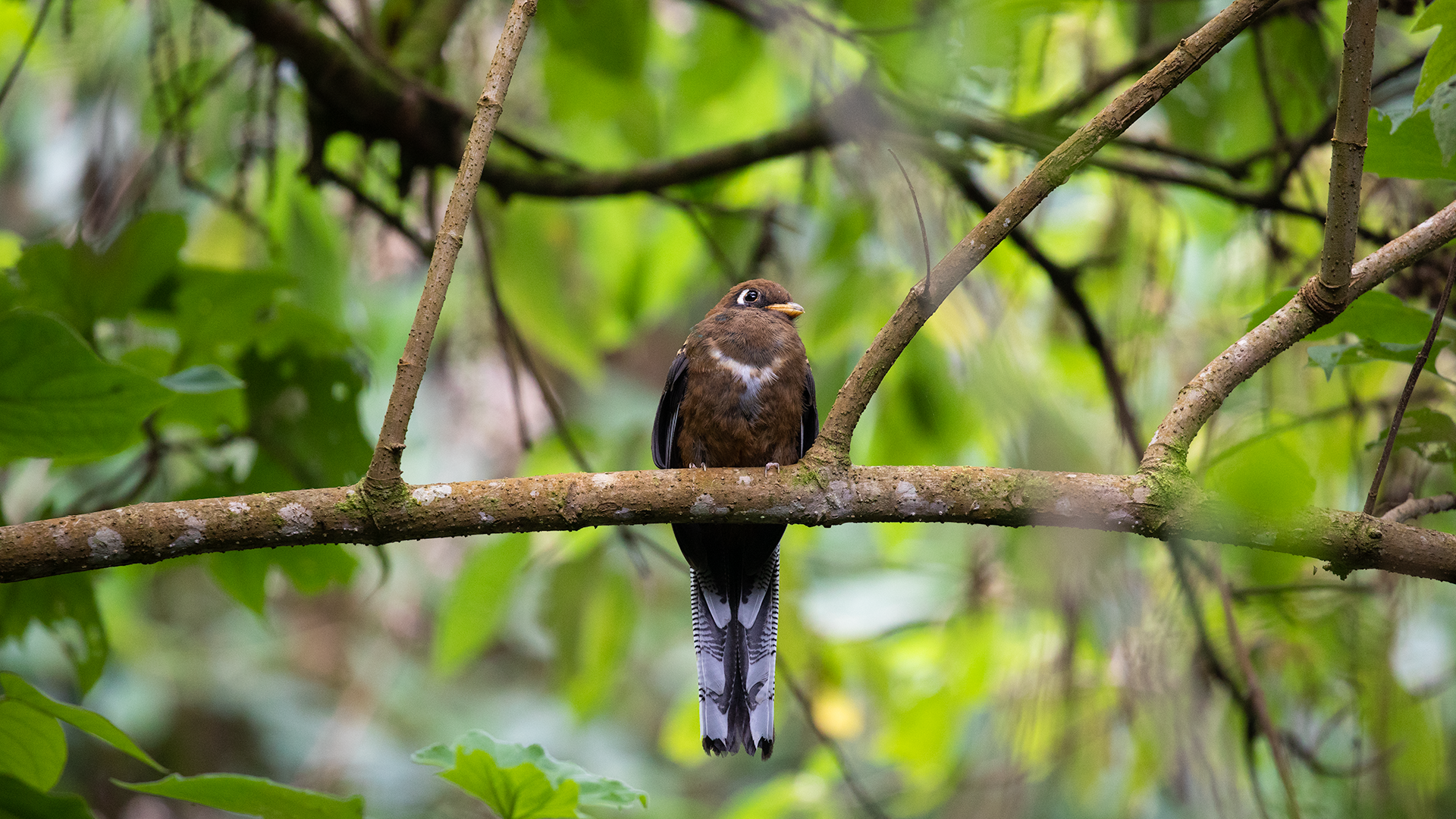
Average red-bellied trogon of subtropical forests. Male is iridescent green on breast, head, and back; female is brown. Namesake dark mask is usually obvious, especially on females. Nearly identical to Collared Trogon but very little overlap; Masked is almost always found at higher elevations. Where both are possible, look especially at tail pattern on males: large white tips on underside of tail feathers, otherwise dark with very fine white barring. On females, look for evenly barred undertail with large white tips combined with contrasting black face. Usually found singly or in pairs, perched quietly from the understory to the subcanopy. Listen for slow series of 3–6 descending whistles.
COLOMBIA . Santa Marta . 2022
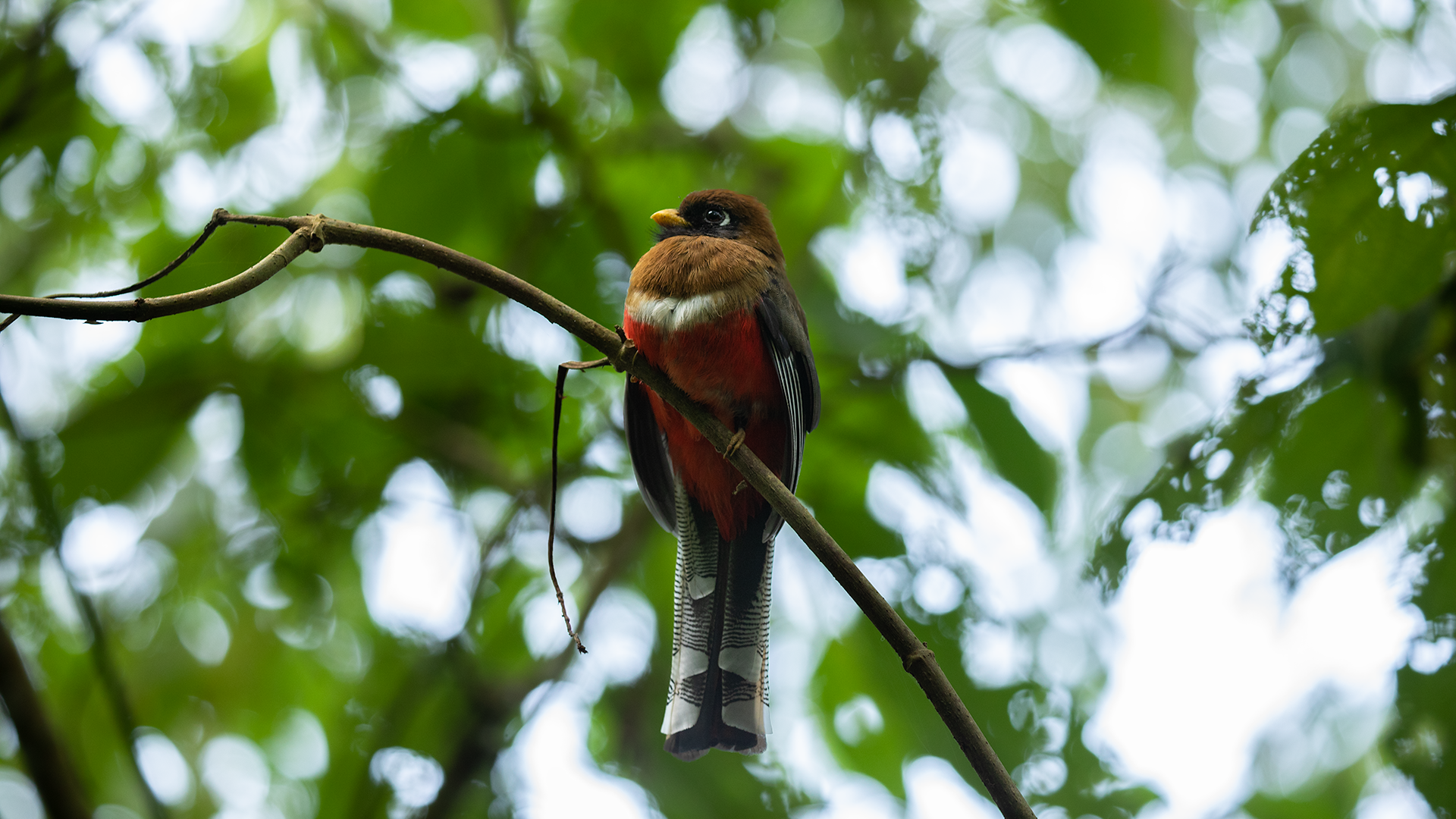
Average red-bellied trogon of subtropical forests. Male is iridescent green on breast, head, and back; female is brown. Namesake dark mask is usually obvious, especially on females. Nearly identical to Collared Trogon but very little overlap; Masked is almost always found at higher elevations. Where both are possible, look especially at tail pattern on males: large white tips on underside of tail feathers, otherwise dark with very fine white barring. On females, look for evenly barred undertail with large white tips combined with contrasting black face. Usually found singly or in pairs, perched quietly from the understory to the subcanopy. Listen for slow series of 3–6 descending whistles.
COLOMBIA . Santa Marta . 2022
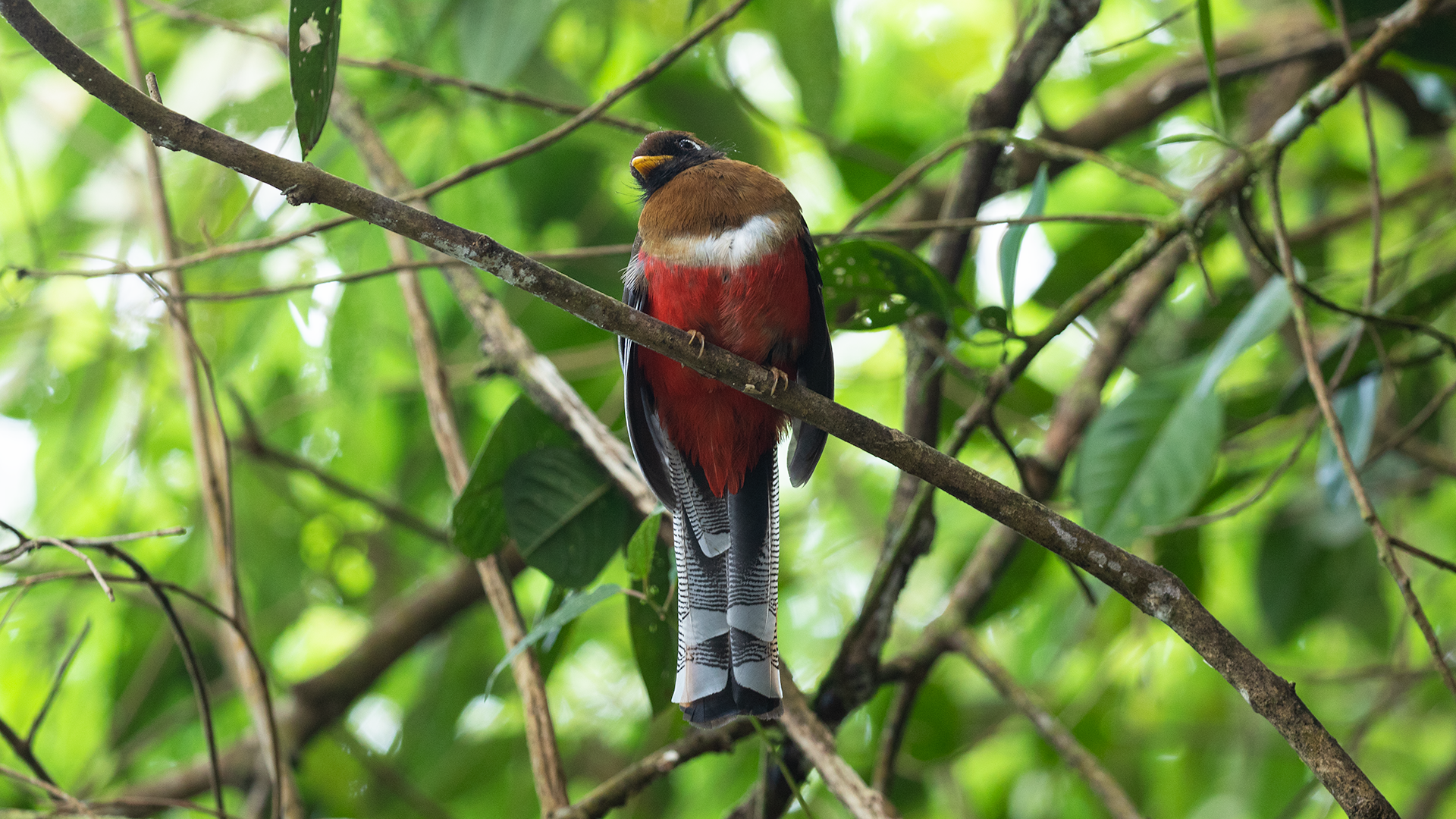
Average red-bellied trogon of subtropical forests. Male is iridescent green on breast, head, and back; female is brown. Namesake dark mask is usually obvious, especially on females. Nearly identical to Collared Trogon but very little overlap; Masked is almost always found at higher elevations. Where both are possible, look especially at tail pattern on males: large white tips on underside of tail feathers, otherwise dark with very fine white barring. On females, look for evenly barred undertail with large white tips combined with contrasting black face. Usually found singly or in pairs, perched quietly from the understory to the subcanopy. Listen for slow series of 3–6 descending whistles.
COLOMBIA . Santa Marta . 2022
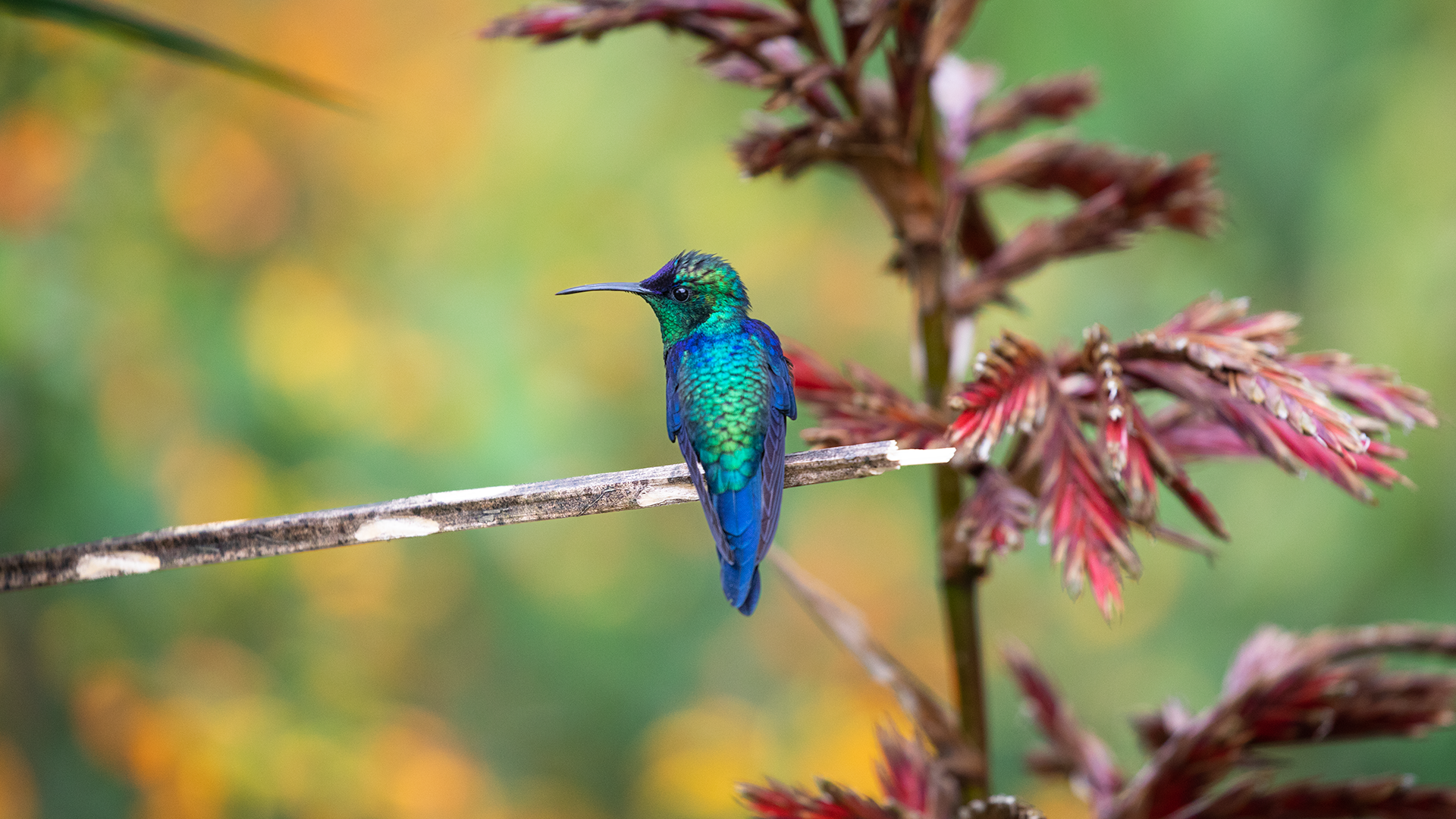
Favors evergreen forest and edge in tropical lowlands, often near streams. Feeds mainly at low to middle levels in shady understory, but comes to feeders at edges and in clearings. Male is stunning but often looks all dark: note the fairly long, deeply forked tail and brilliant emerald and violet plumage. Female rather dull and plain: note the black bill, green-mottled flanks, and blue-black tail with whitish corners.
COLOMBIA . Santa Marta . 2022

Rather large, spectacular hummingbird of humid tropical lowlands that favors forest edges, adjacent clearings with scattered trees and flowering bushes, and gardens. Feeds at all levels, often in the canopy, hovering with its tail cocked and occasionally opening it to show extensive white. Male has deep blue hood, green upperparts with white collar (often hard to see), white underparts, and mostly white tail. Some females look similar to males while others look very different, with dark spotting below and a mostly green tail with white tips.
COLOMBIA . Santa Marta . 2022

Rather large, spectacular hummingbird of humid tropical lowlands that favors forest edges, adjacent clearings with scattered trees and flowering bushes, and gardens. Feeds at all levels, often in the canopy, hovering with its tail cocked and occasionally opening it to show extensive white. Male has deep blue hood, green upperparts with white collar (often hard to see), white underparts, and mostly white tail. Some females look similar to males while others look very different, with dark spotting below and a mostly green tail with white tips.
COLOMBIA . Santa Marta . 2022

Small, plump bird with stout bill. Male mostly lime green with contrasting yellow belly and thin blue collar on nape and blue rump; some populations entirely blue above. Female similar but duller, with greener belly. Usually seen in pairs or small flocks, often in association with a fruiting tree. Forages at all levels, most frequently in the canopy. Listen for its plaintive whistles, usually one or two notes.
COLOMBIA . Santa Marta . 2022
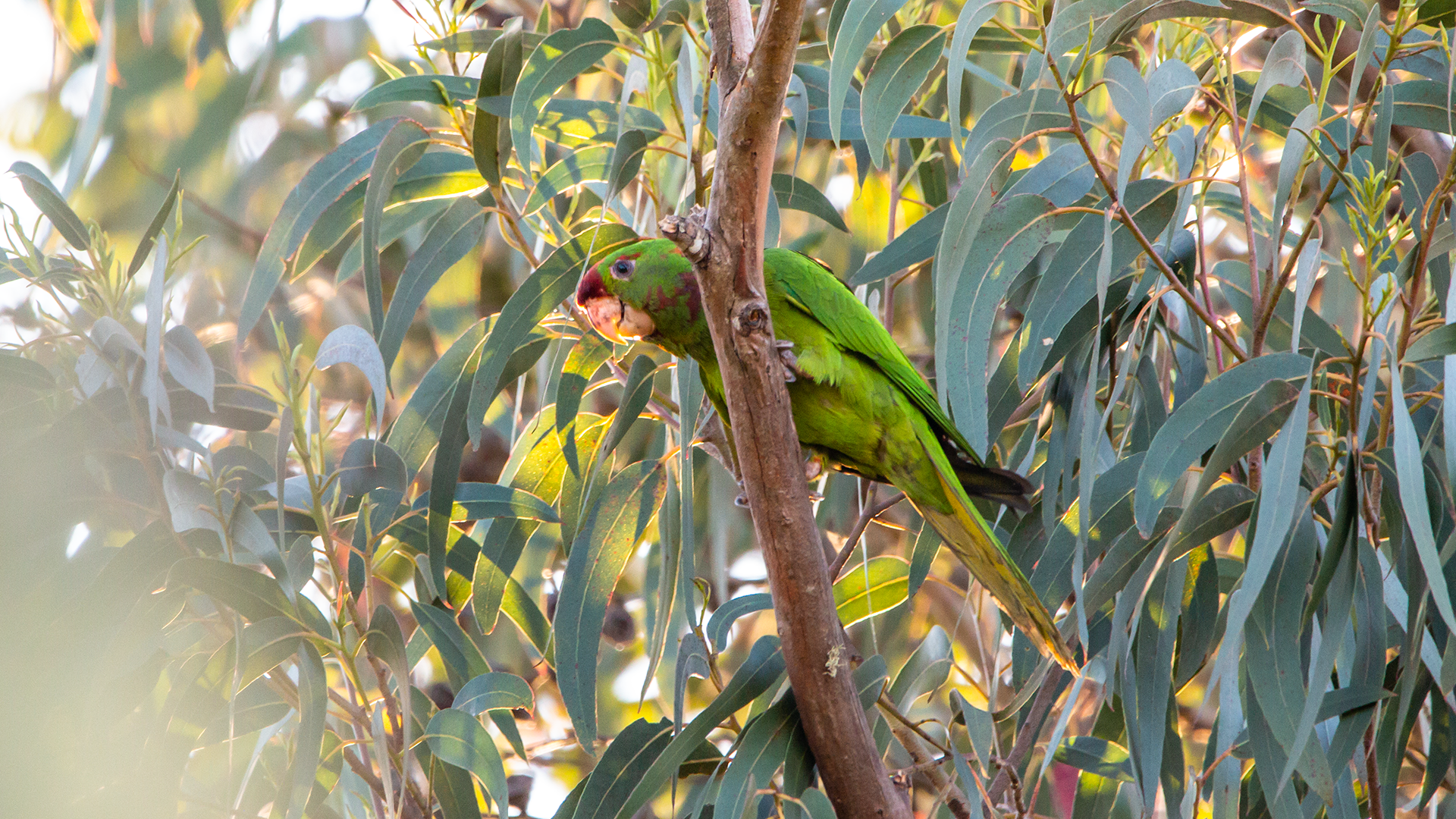
Mostly green parakeet with long pointed tail. Look for isolated red patch on forehead and red shoulders. Sexes similar. Compare similar parakeets like Mitred and Red-masked which show different patterns of red on head. Found in small flocks from around 800-3000m, where they can occur in forest or open patchy woodland. Nests and roosts on cliffs.
COLOMBIA . Santa Marta . 2022
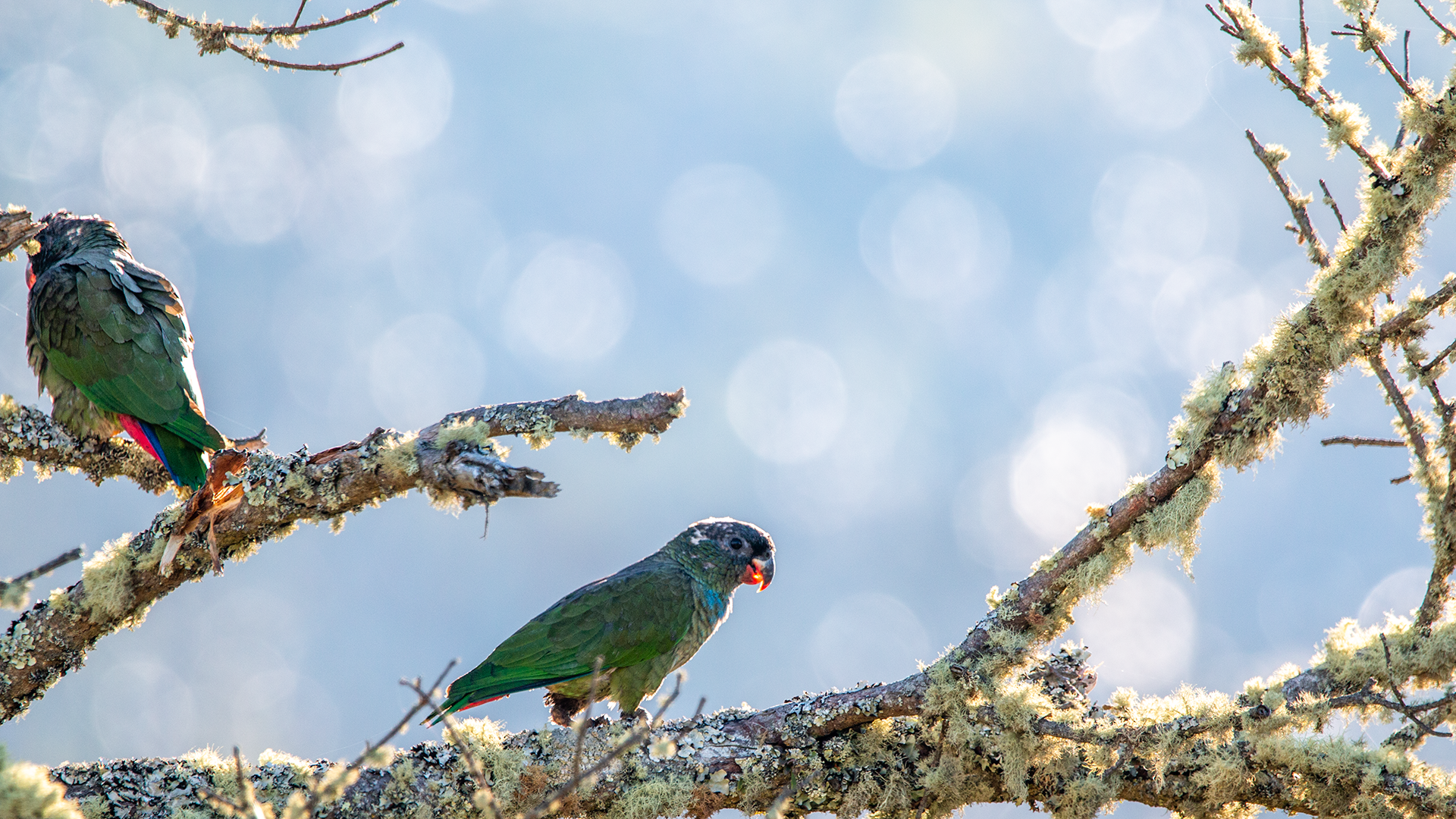
Medium-sized parrot of mid-elevation cloud forest. Plumage is green with red vent, blue breast, and dark blue forecrown. Red bill is usually evident on perched birds, but can be hard to see in flight. Eyering is gray or white and rather indistinct in much of its range. In flight, note deep wingbeats: wingtips almost touch on the downward stroke. Typically encountered in small flocks of up to 10 or 15 birds, occasionally more. Feeds on fruit in the forest canopy.
COLOMBIA . Santa Marta . 2022
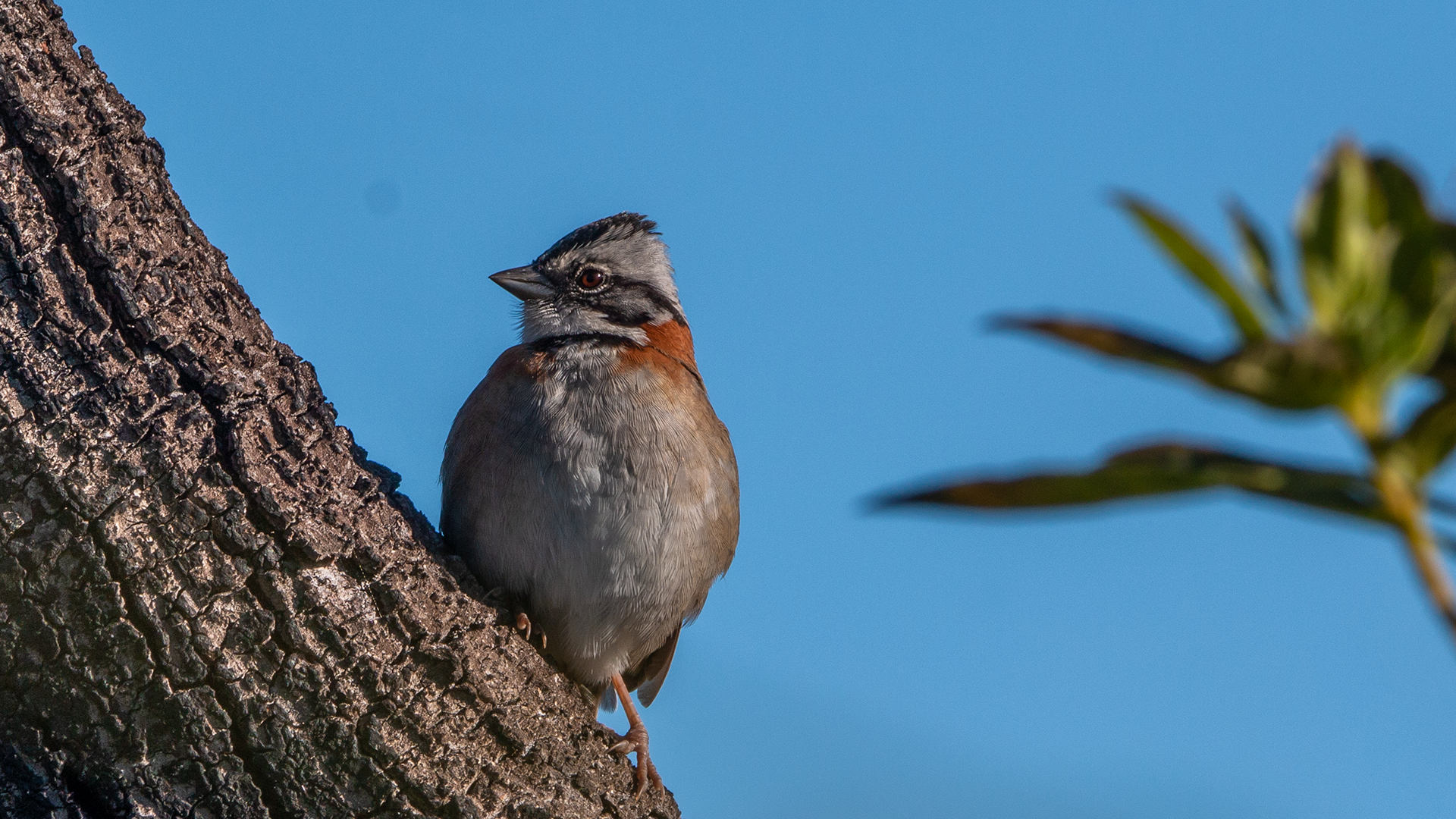
Handsomely patterned sparrow from highlands of Chiapas south to temperate South America. Occurs in open and semiopen habitats such as villages, towns, and farmland with hedges and brushy thickets. Feeds on the ground and in bushes, at times in flocks. Note the peaked crown, bold black-and-gray head pattern (though black much reduced in southern populations), bright rusty collar, and black chest patch. Juvenile has ghosting of adult pattern and breast is streaked dusky.
COLOMBIA . Santa Marta . 2022
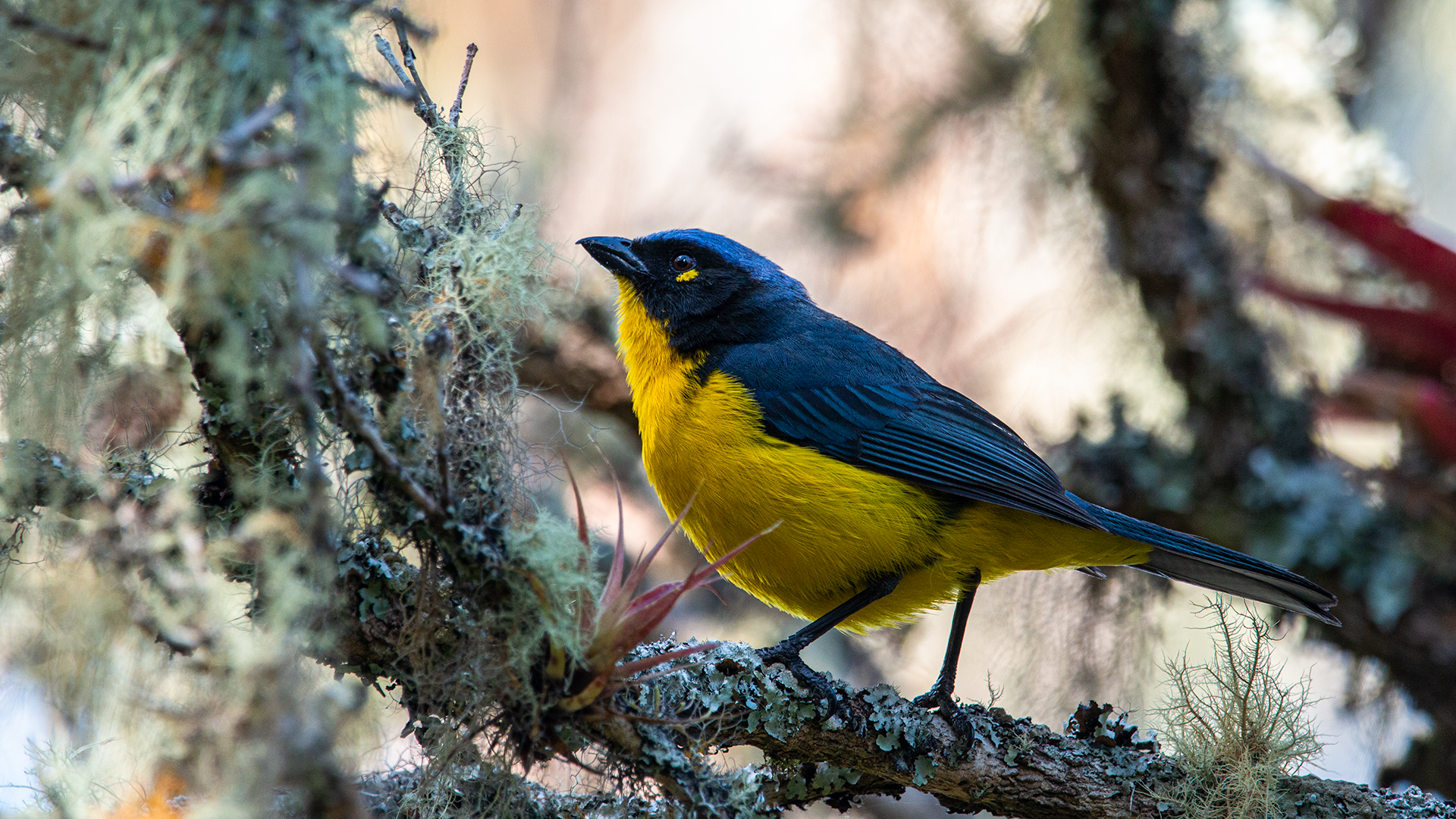
Large, colorful tanager found only in the Santa Marta Mountains of Colombia. Note the black mask, yellow dot behind eye, and azure crown; plumage is otherwise blue and yellow. Usually seen in the canopy of cloud forest, often in pairs, and regularly joins mixed species flocks. It is rather quiet for a mountain-tanager, and typically just gives soft chip notes. Quite common in the upper parts of El Dorado Nature Reserve.
COLOMBIA . Santa Marta . 2022
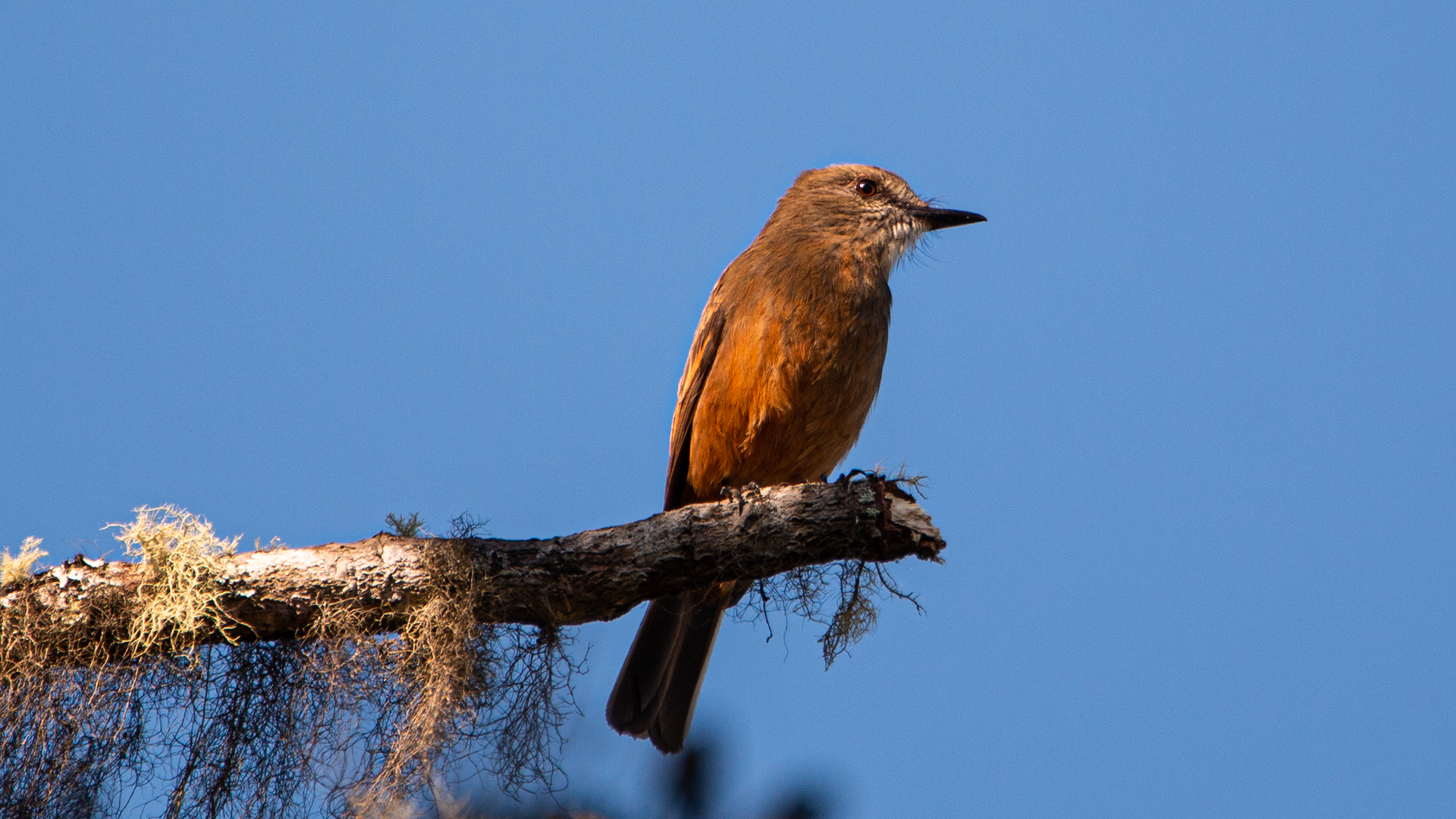
Scarce flycatcher found only at higher elevations in Colombia’s Santa Marta Mountains. Quite similar to the more widespread Streak-throated Bush-Tyrant, but can be distinguished by the indistinct and less extensive streaking on the throat and lack of cinnamon at the base of the underside of the tail; whistled calls are shorter, clearer, and descend more in pitch. Usually seen perched high in the canopy of cloud forest. Regularly encountered in the upper parts of El Dorado Nature Reserve.
COLOMBIA . Santa Marta . 2022
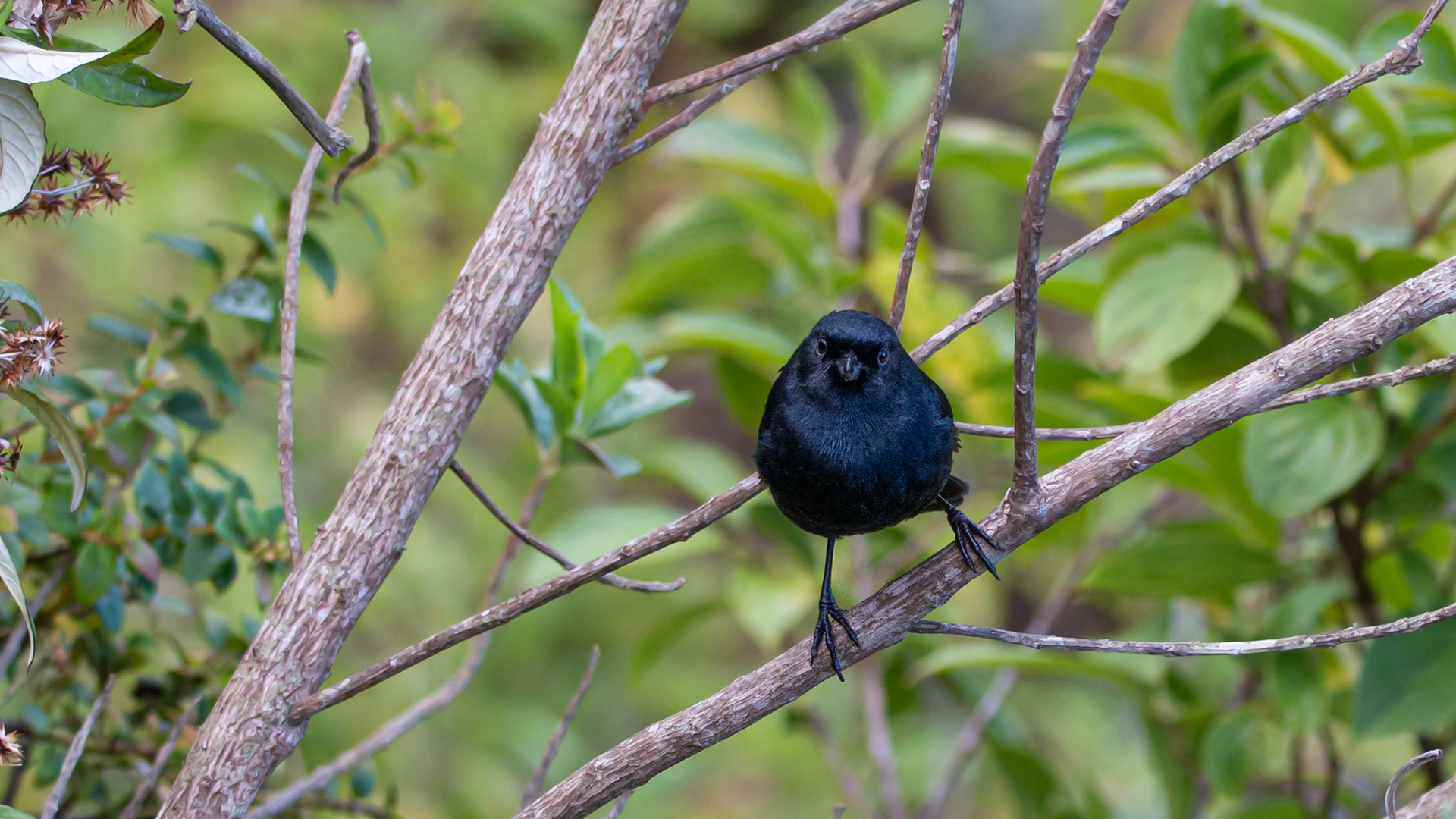
Fairly small flowerpiercer found in the Andes from Venezuela to Peru. Entirely black with typical flowerpiercer bill: uniquely upswept with a hooked tip. In most of range, lacks gray shoulder patch, which helps separate from Glossy Flowerpiercer. However, population in eastern Andes of Colombia do show a gray shoulder patch, but it is smaller and duller than Glossy’s. Black is typically associated with dry scrubby habitats at high elevations, from 2,500-4,500m. Singles or pairs forage at low to middle levels.
COLOMBIA . Santa Marta . 2022
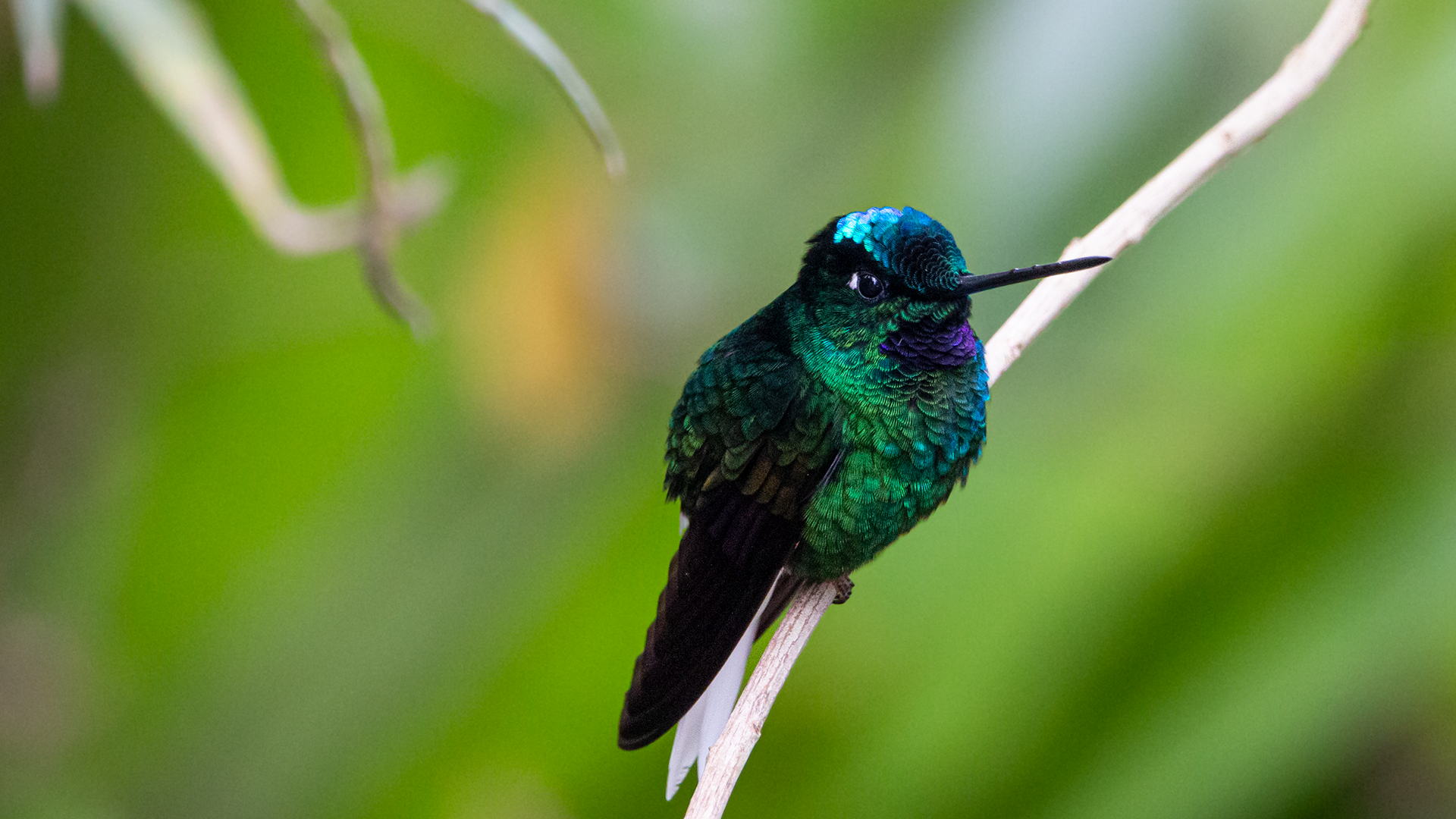
Large, long-billed hummingbird endemic to Colombia’s Santa Marta Mountains. Spectacular male is easily recognized by his brilliant white tail. Female lacks this, but her tawny underparts and lengthy bill still make her easy to ID. Inhabits humid forest at moderately high elevations and feeds on a wide variety of flowers as well as insects and other arthropods. Sometimes visits feeders within El Dorado Nature Reserve.
COLOMBIA . Santa Marta . 2022
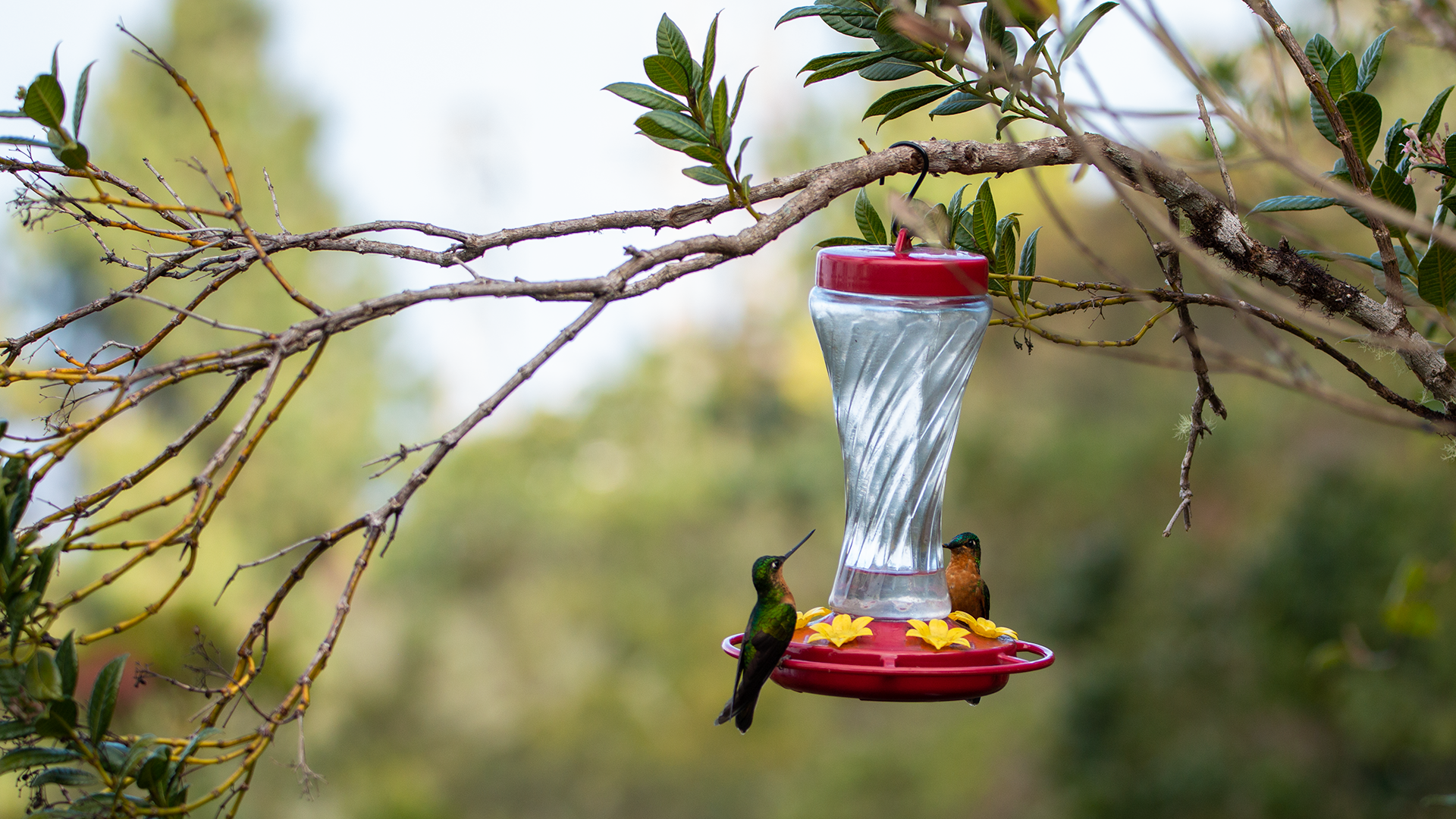
Large, long-billed hummingbird endemic to Colombia’s Santa Marta Mountains. Spectacular male is easily recognized by his brilliant white tail. Female lacks this, but her tawny underparts and lengthy bill still make her easy to ID. Inhabits humid forest at moderately high elevations and feeds on a wide variety of flowers as well as insects and other arthropods. Sometimes visits feeders within El Dorado Nature Reserve.
COLOMBIA . Santa Marta . 2022
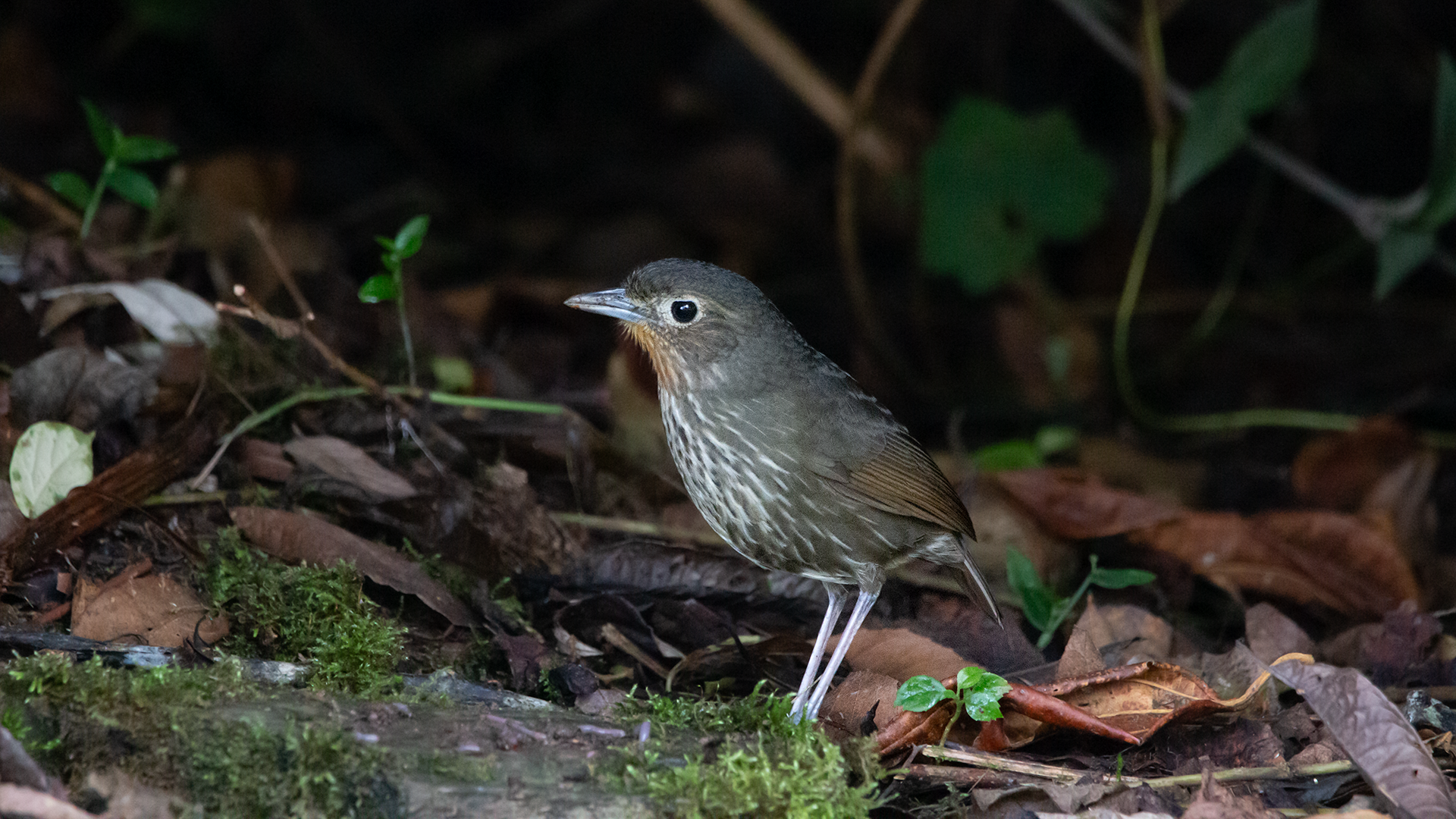
Plump, terrestrial bird found only in the Santa Marta Mountains of Colombia. Like other antpittas, it is short-tailed and long-legged. Orange throat and streaked underparts help separate it from other ground birds. It is shy and normally very hard to see, but sometimes visits feeding stations in and around El Dorado Nature Reserve. Frequently gives two clear, emphatic whistles; the second note is slightly higher in pitch.
COLOMBIA . Santa Marta . 2022
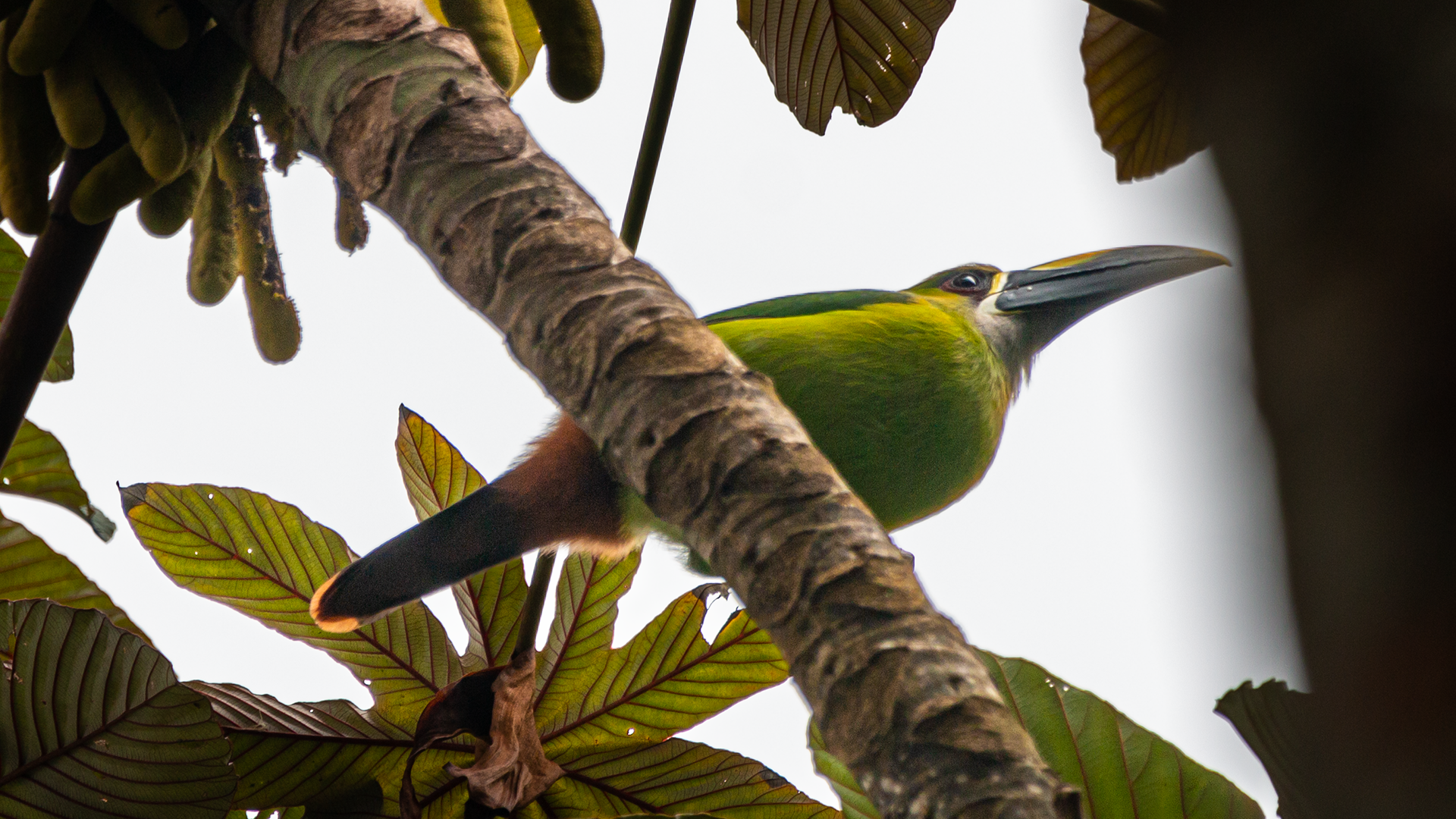
Medium-sized, grass-green toucan of humid tropical forest in foothills and highlands; also very locally in lowlands. Usually in pairs or small groups, moving through the canopy or feeding at fruiting trees. Nothing similar in its range. Note the rusty tail tips, best seen from below. Pattern of black and yellow on bill varies from region to region.
COLOMBIA . Santa Marta . 2022
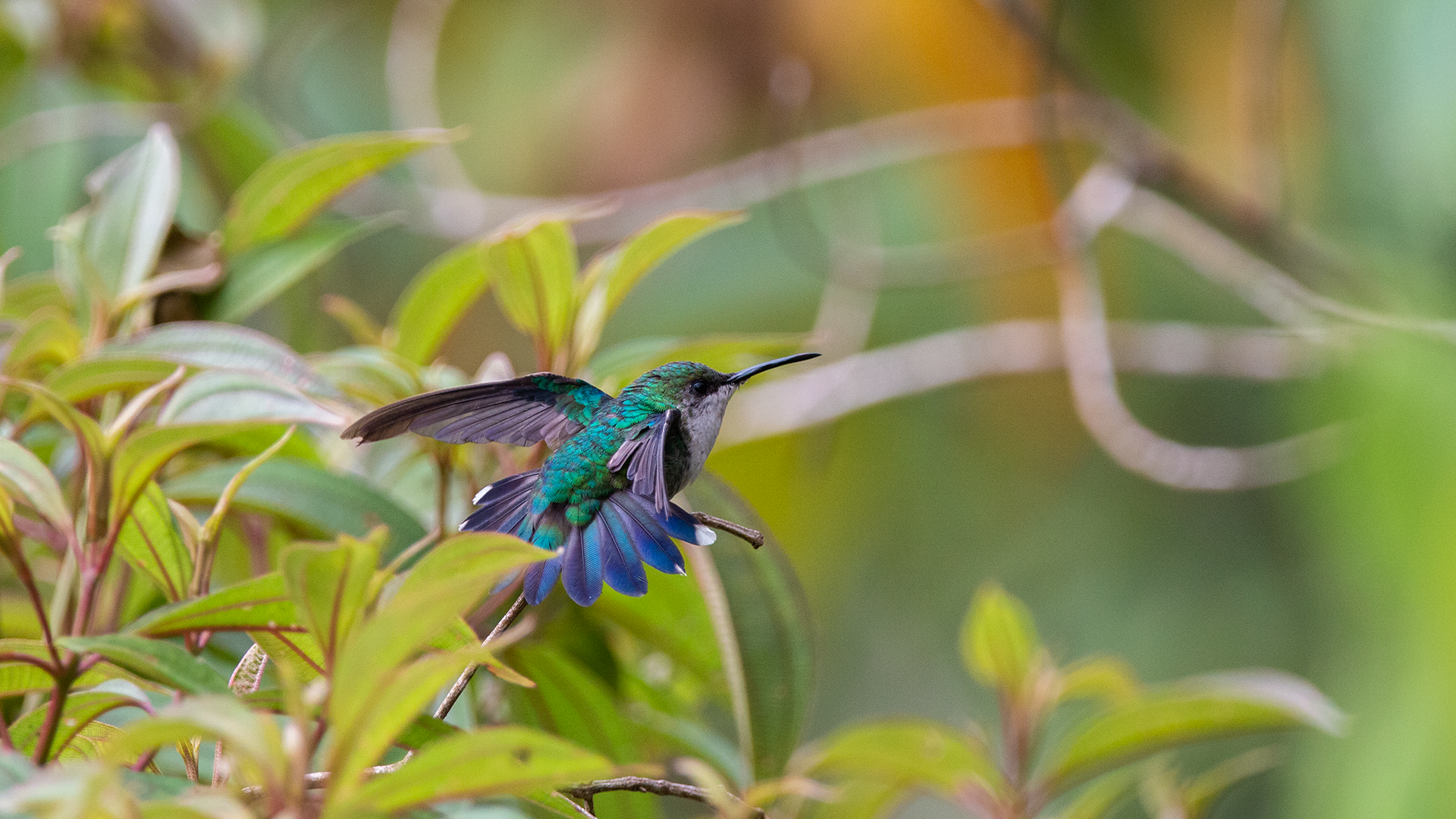
Fairly small fork-tailed hummingbird of lowlands. Males have an iridescent green head and breast and a violet belly, but in poor light appears evenly dark overall. Females are green above, light gray below. Note the slightly drooping bill on both sexes. One of the most common hummingbirds in lowland Amazonia; found in a variety of open forested habitats from young rainforest and forest edges to treefall gaps and gardens.
COLOMBIA . Santa Marta . 2022
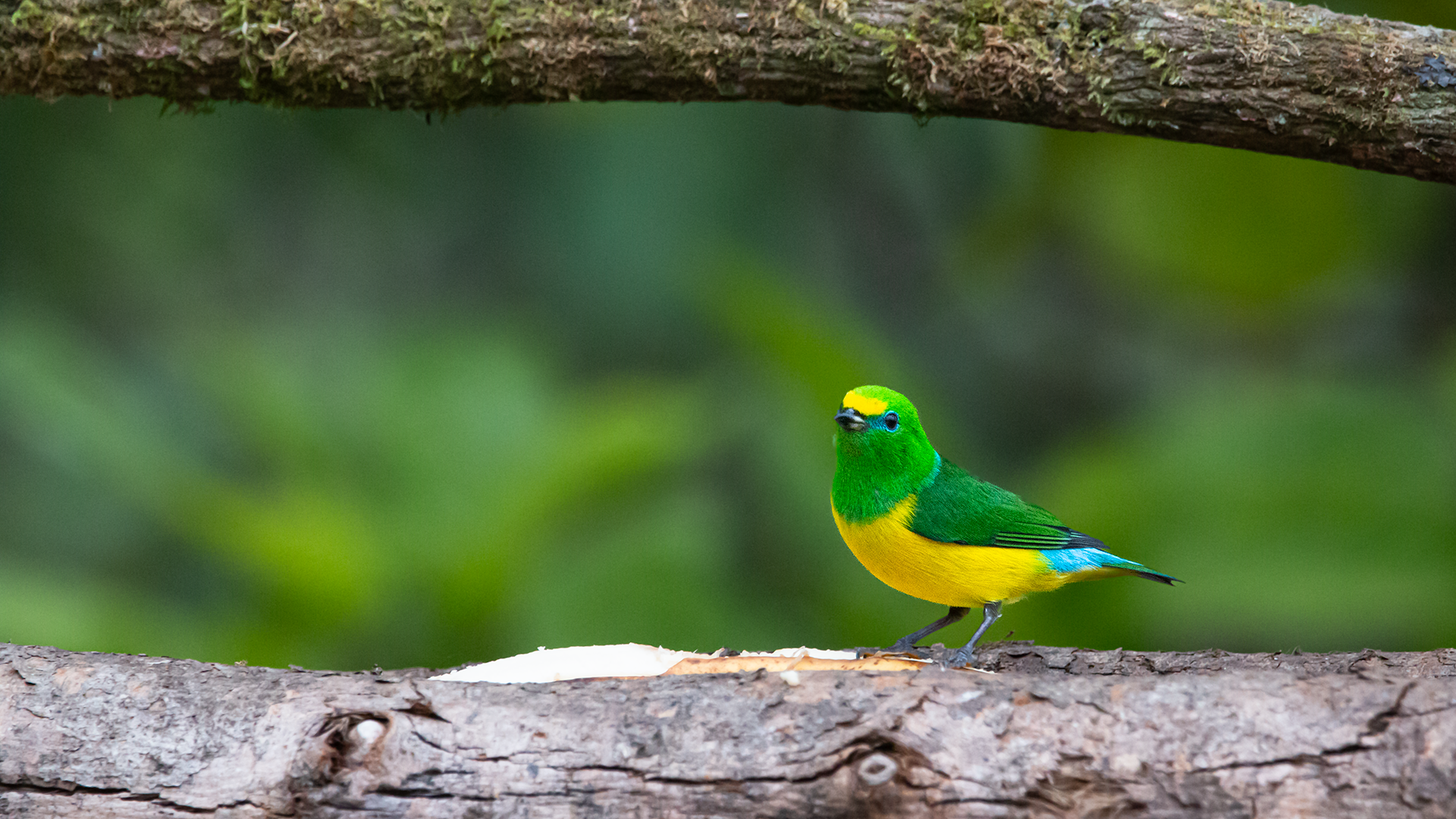
Small, plump bird with stout bill. Male mostly lime green with contrasting yellow belly and thin blue collar on nape and blue rump; some populations entirely blue above. Female similar but duller, with greener belly. Usually seen in pairs or small flocks, often in association with a fruiting tree. Forages at all levels, most frequently in the canopy. Listen for its plaintive whistles, usually one or two notes.
COLOMBIA . Santa Marta . 2022
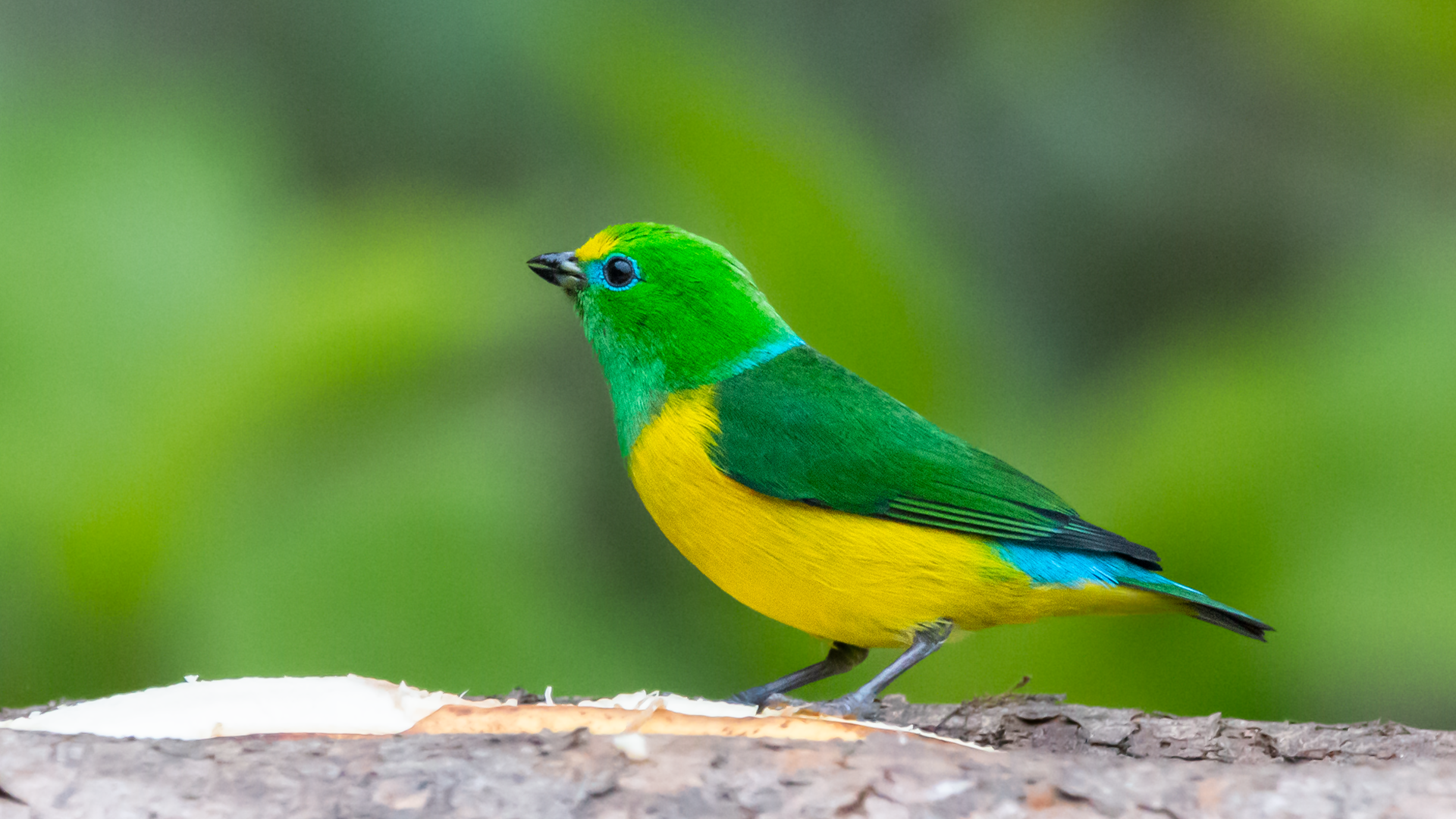
Small, plump bird with stout bill. Male mostly lime green with contrasting yellow belly and thin blue collar on nape and blue rump; some populations entirely blue above. Female similar but duller, with greener belly. Usually seen in pairs or small flocks, often in association with a fruiting tree. Forages at all levels, most frequently in the canopy. Listen for its plaintive whistles, usually one or two notes.
COLOMBIA . Santa Marta . 2022
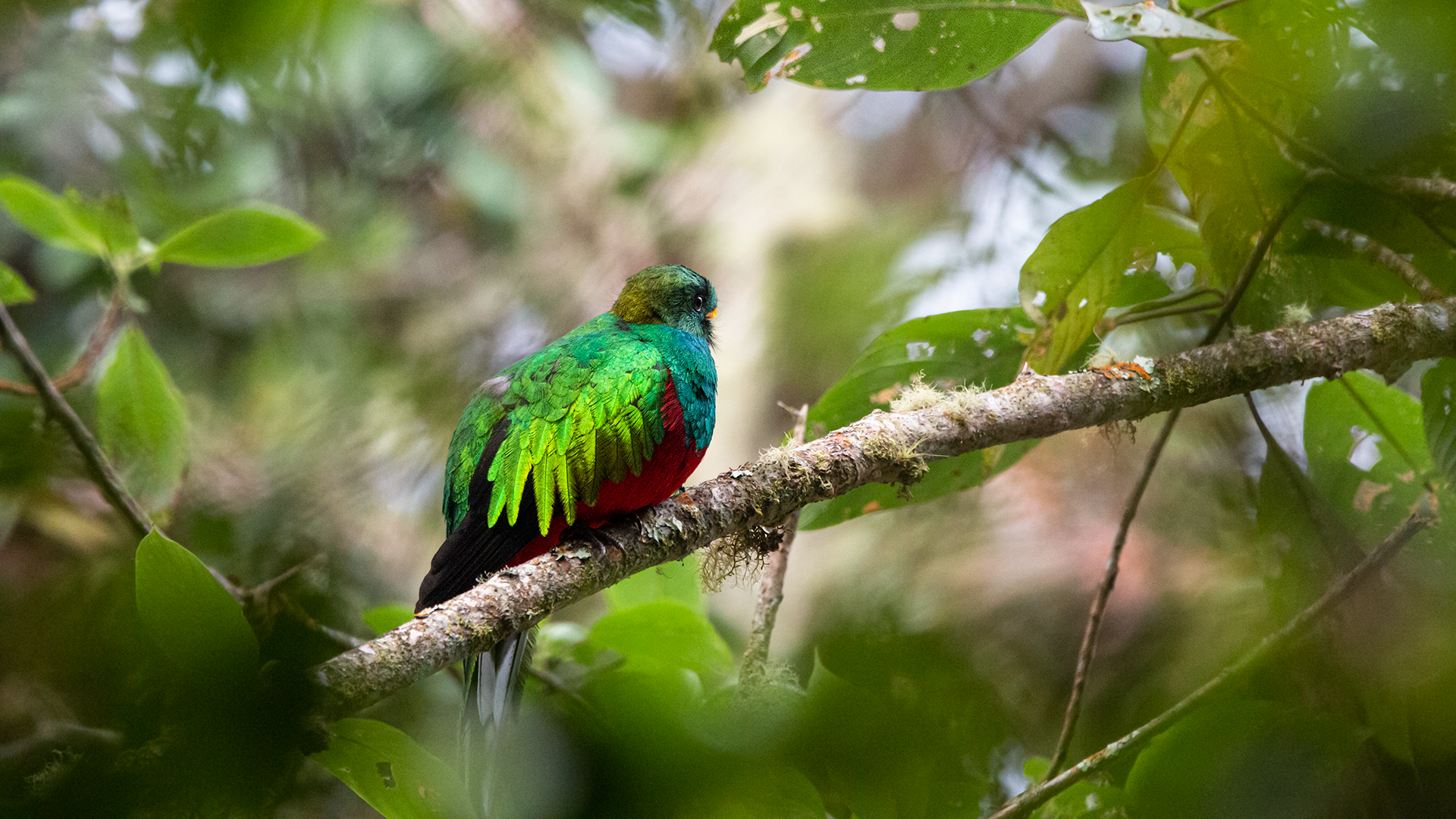
Elegant large trogon with a black tail tipped with white below, and lacking a crest. Has golden-tinged green upperparts and breast and bright red belly; bill is yellow. Female has a gray bill, gray-brown lower breast, and white barred undertail with white tips. No overlap with other quetzal species, and larger than other trogons in range. Fairly common in tall mature cloud forest, often alone or in pairs but sometimes in groups at fruiting trees. Perches at medium to high levels in the forest. Song is a loud and melancholic series of “WHOOOou hoo hoou”; call is similar to that of Barred Forest-Falcon.
COLOMBIA . Santa Marta . 2022
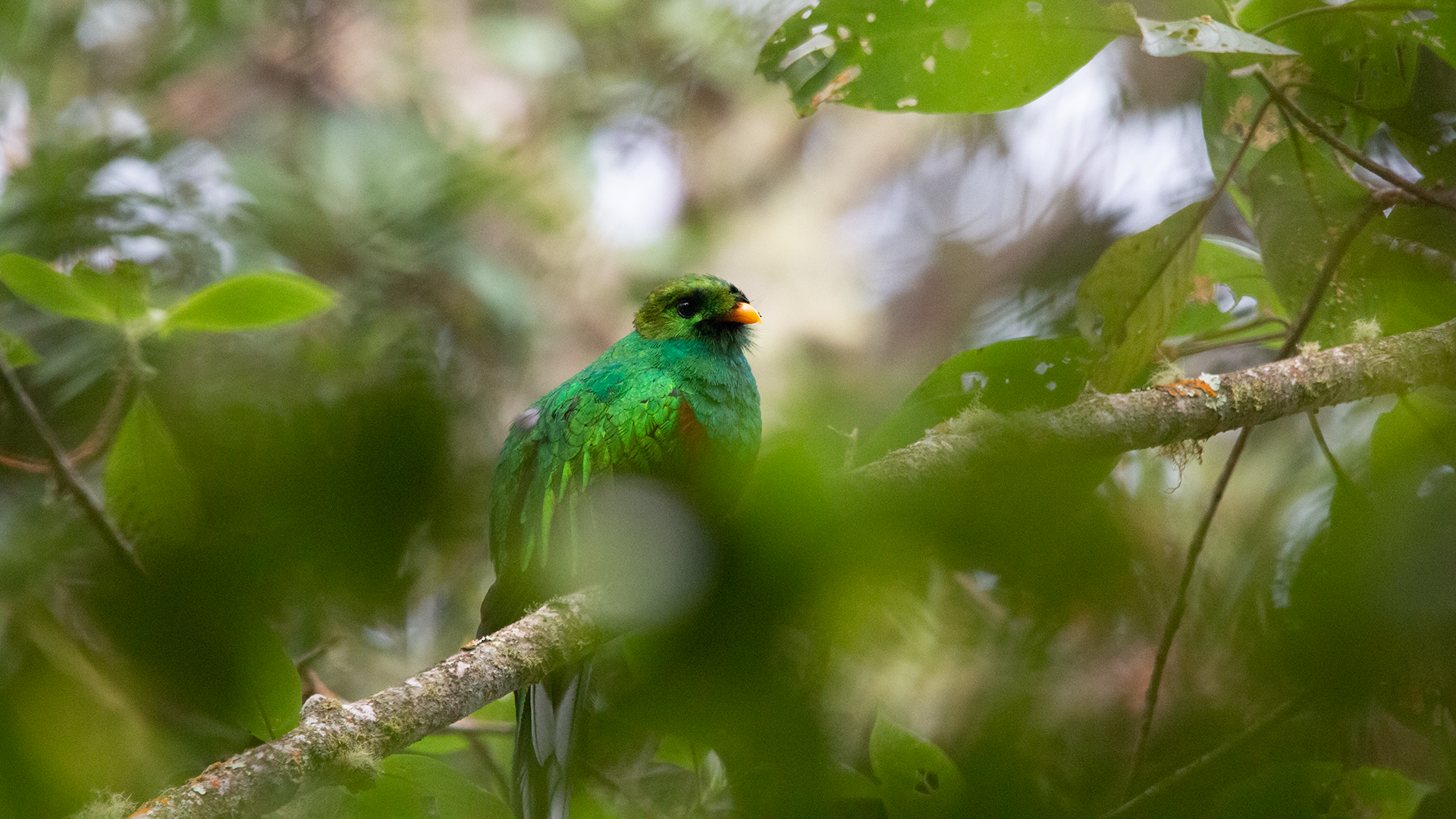
Elegant large trogon with a black tail tipped with white below, and lacking a crest. Has golden-tinged green upperparts and breast and bright red belly; bill is yellow. Female has a gray bill, gray-brown lower breast, and white barred undertail with white tips. No overlap with other quetzal species, and larger than other trogons in range. Fairly common in tall mature cloud forest, often alone or in pairs but sometimes in groups at fruiting trees. Perches at medium to high levels in the forest. Song is a loud and melancholic series of “WHOOOou hoo hoou”; call is similar to that of Barred Forest-Falcon.
COLOMBIA . Santa Marta . 2022
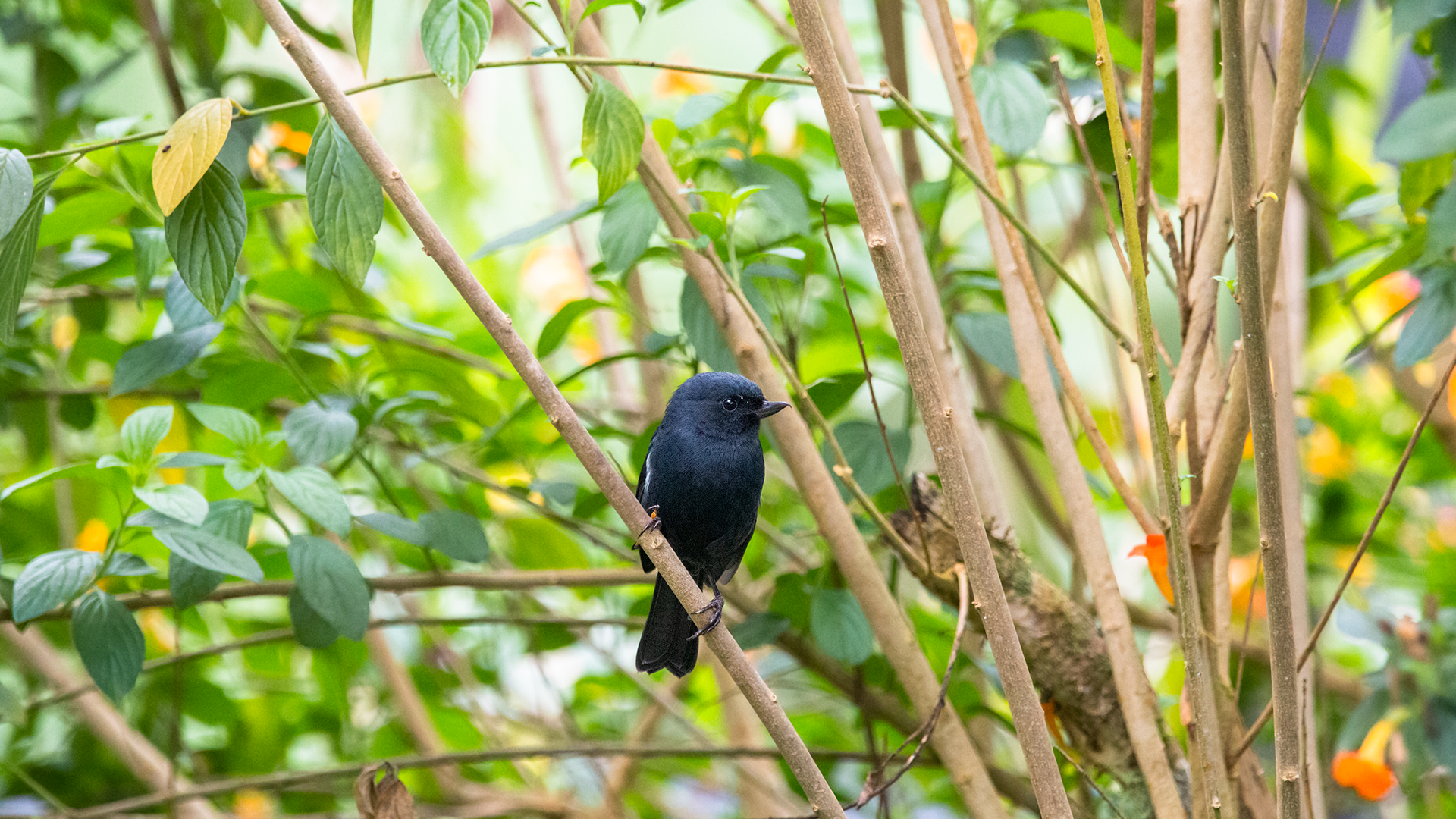
Fairly small flowerpiercer found in the Andes from Venezuela to Peru. Entirely black with typical flowerpiercer bill: uniquely upswept with a hooked tip. In most of range, lacks gray shoulder patch, which helps separate from Glossy Flowerpiercer. However, population in eastern Andes of Colombia do show a gray shoulder patch, but it is smaller and duller than Glossy’s. Black is typically associated with dry scrubby habitats at high elevations, from 2,500-4,500m. Singles or pairs forage at low to middle levels.
COLOMBIA . Santa Marta . 2022

Fairly small fork-tailed hummingbird of lowlands. Males have an iridescent green head and breast and a violet belly, but in poor light appears evenly dark overall. Females are green above, light gray below. Note the slightly drooping bill on both sexes. One of the most common hummingbirds in lowland Amazonia; found in a variety of open forested habitats from young rainforest and forest edges to treefall gaps and gardens.
COLOMBIA . Santa Marta . 2022
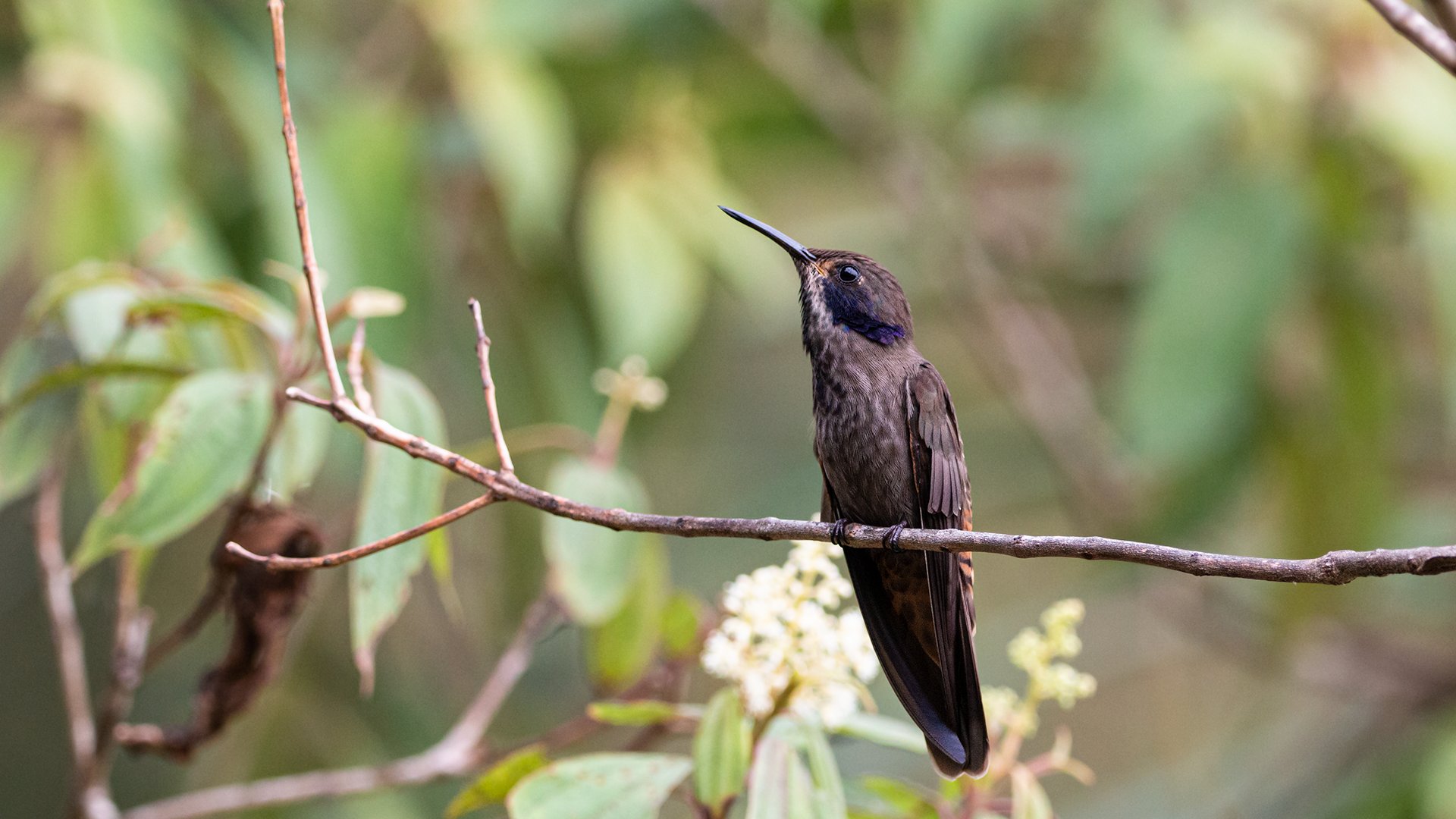
Uncommon, rather large but drab, fairly short-billed hummingbird of tropical and subtropical forest and edge. Can be aggressive when defending flower patches from most other hummingbirds. Occurs mainly in foothills, ranging seasonally down to lowlands. Sexes similar: overall grayish brown with a broad pale mustache, dark throat patch, and dark violet ear patches that can be raised. Tail has a broad blackish subterminal band and rump feathers have bright rusty edgings.
COLOMBIA . Santa Marta . 2022
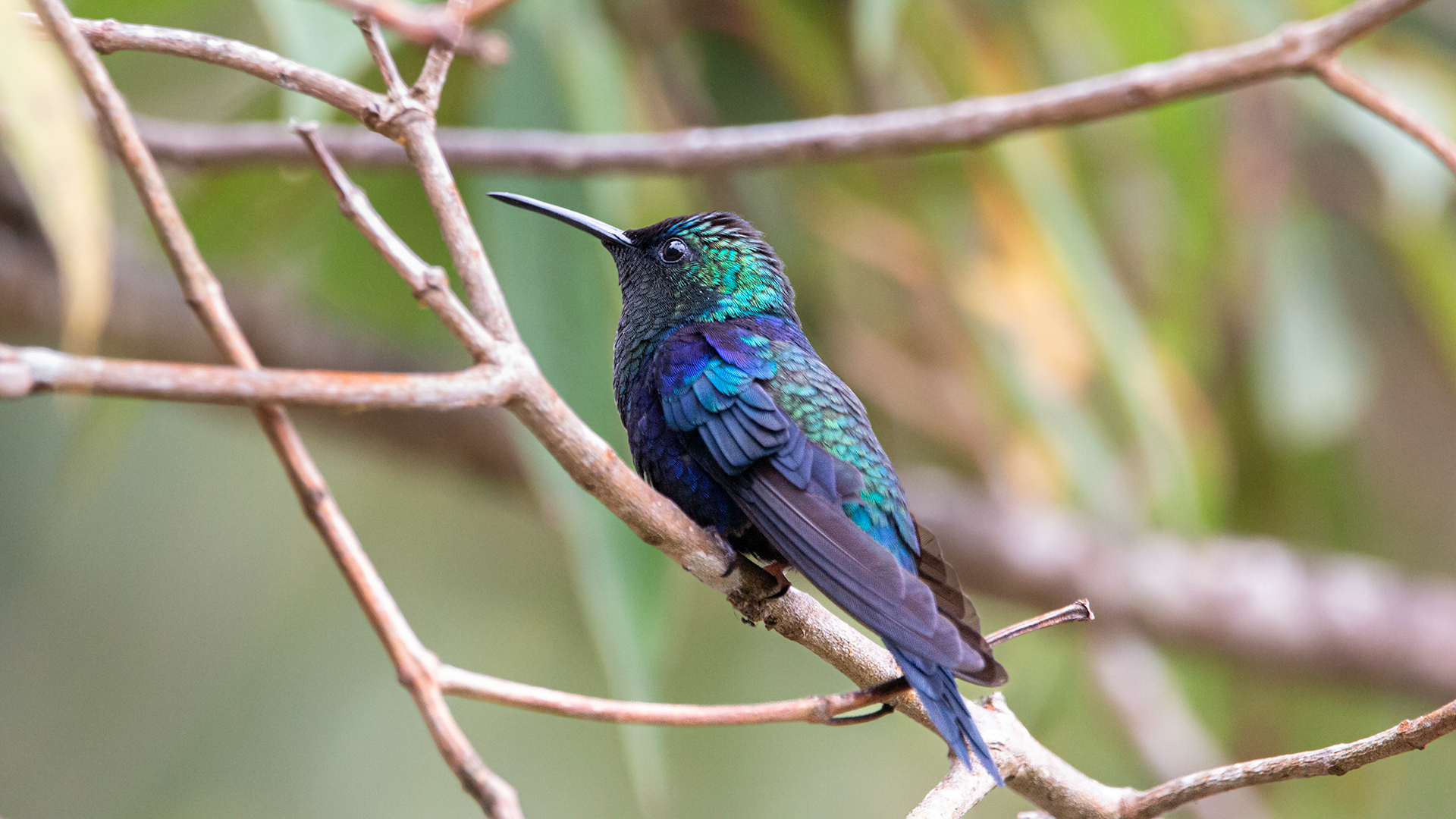
Favors evergreen forest and edge in tropical lowlands, often near streams. Feeds mainly at low to middle levels in shady understory, but comes to feeders at edges and in clearings. Male is stunning but often looks all dark: note the fairly long, deeply forked tail and brilliant emerald and violet plumage. Female rather dull and plain: note the black bill, green-mottled flanks, and blue-black tail with whitish corners.
COLOMBIA . Santa Marta . 2022